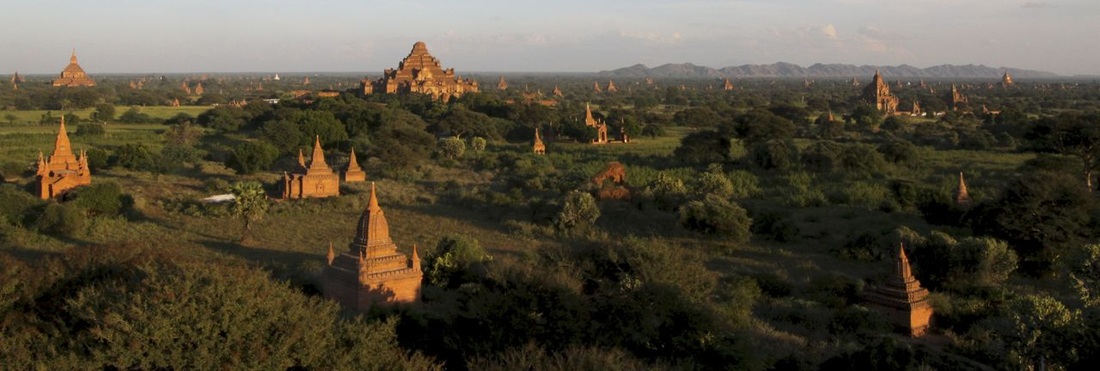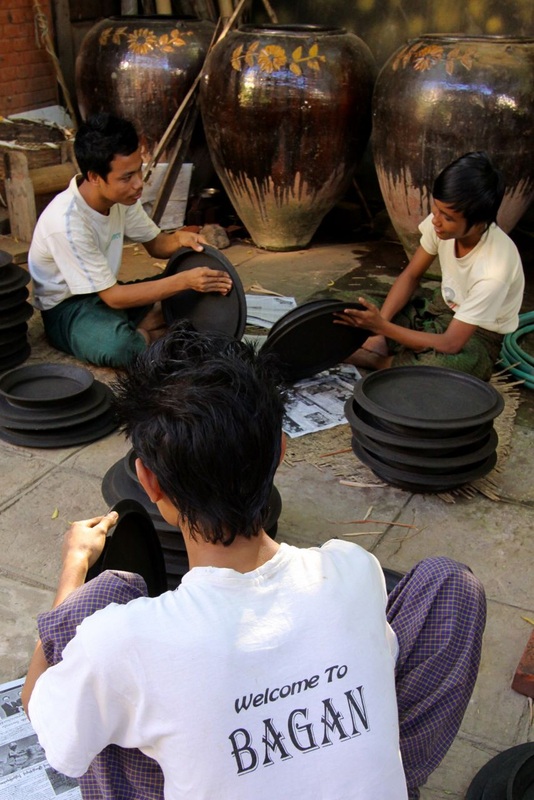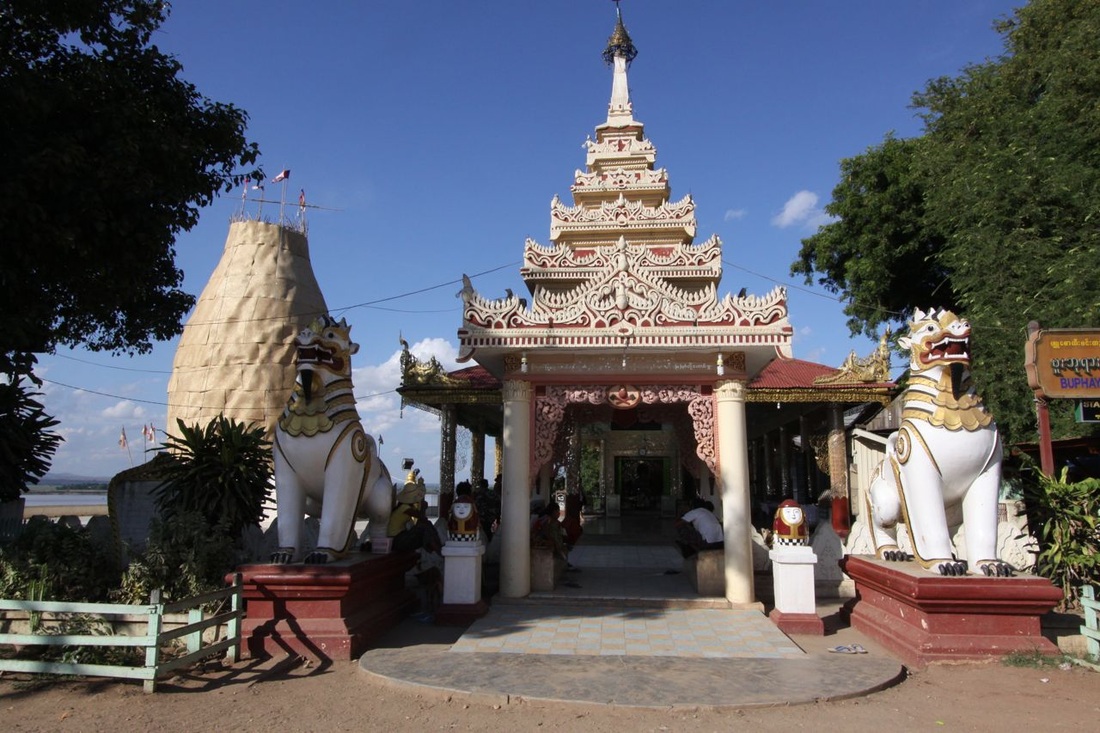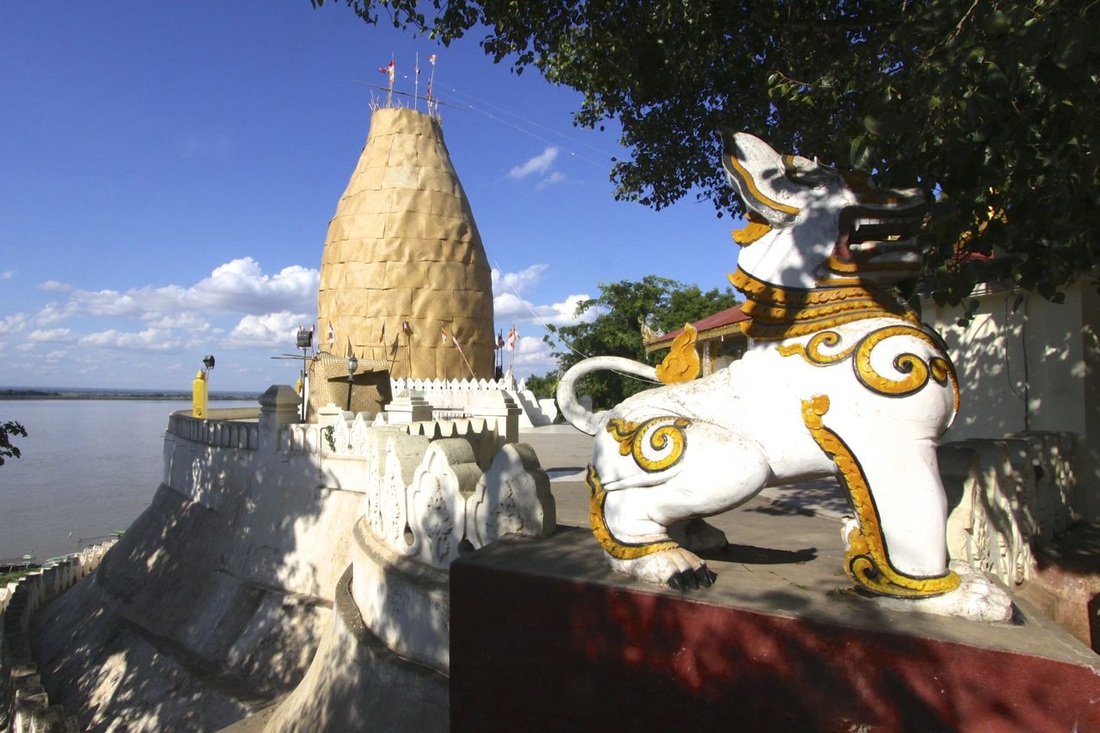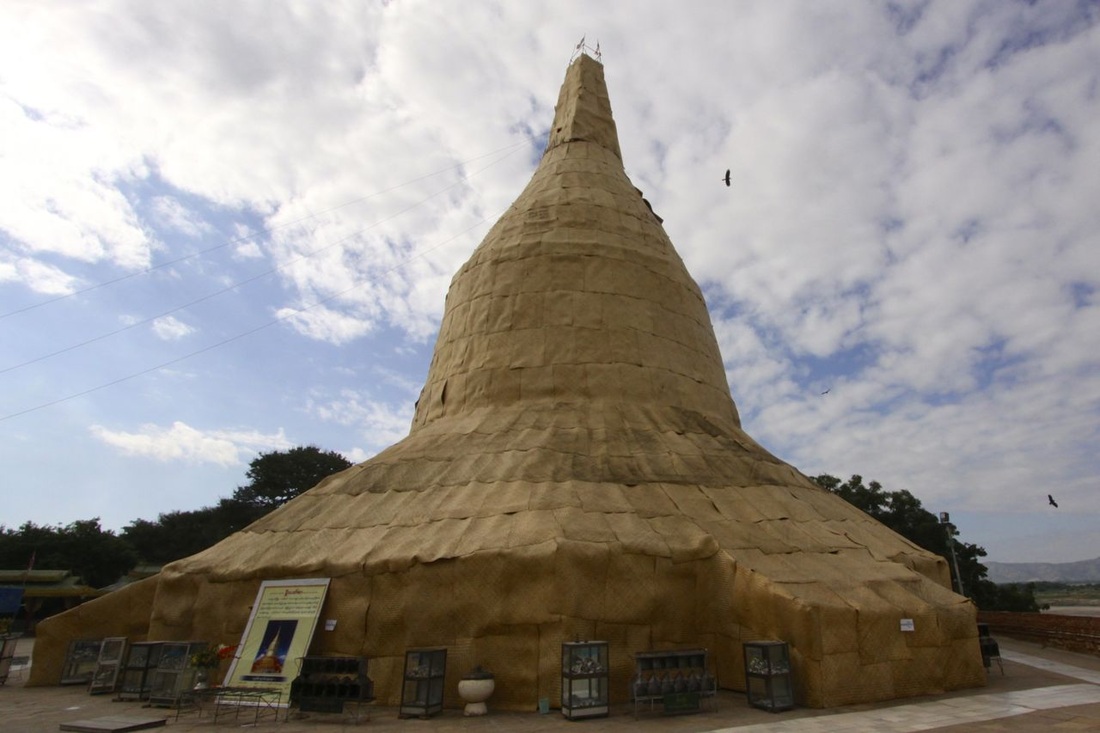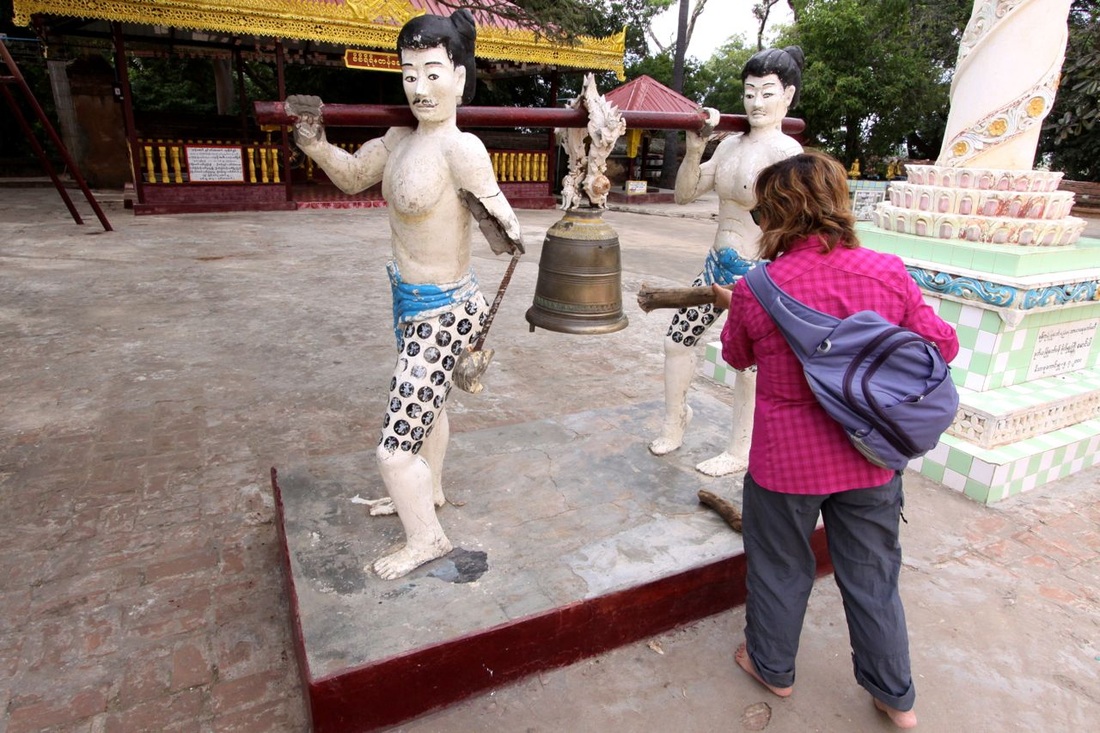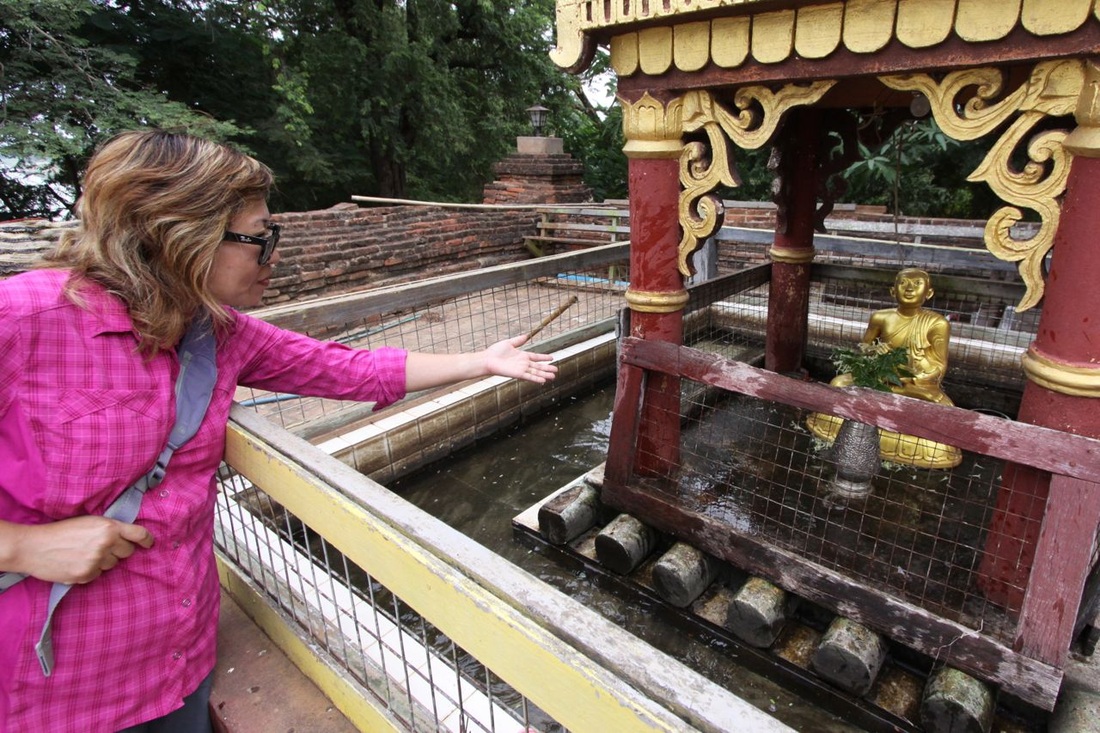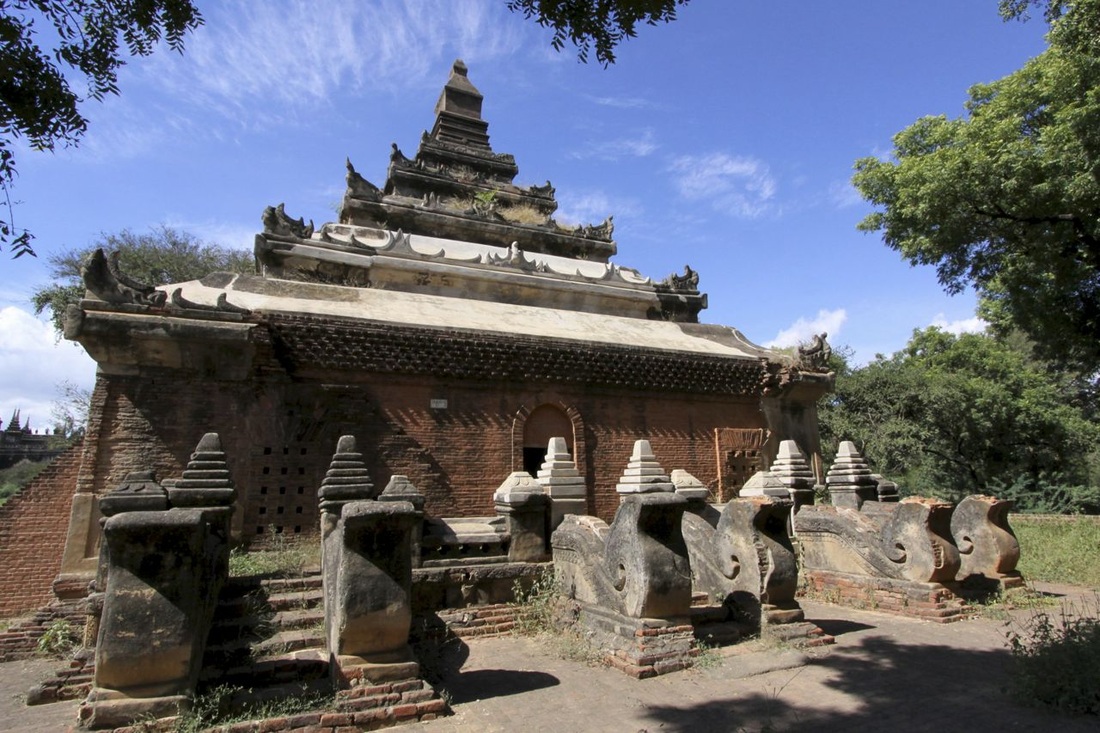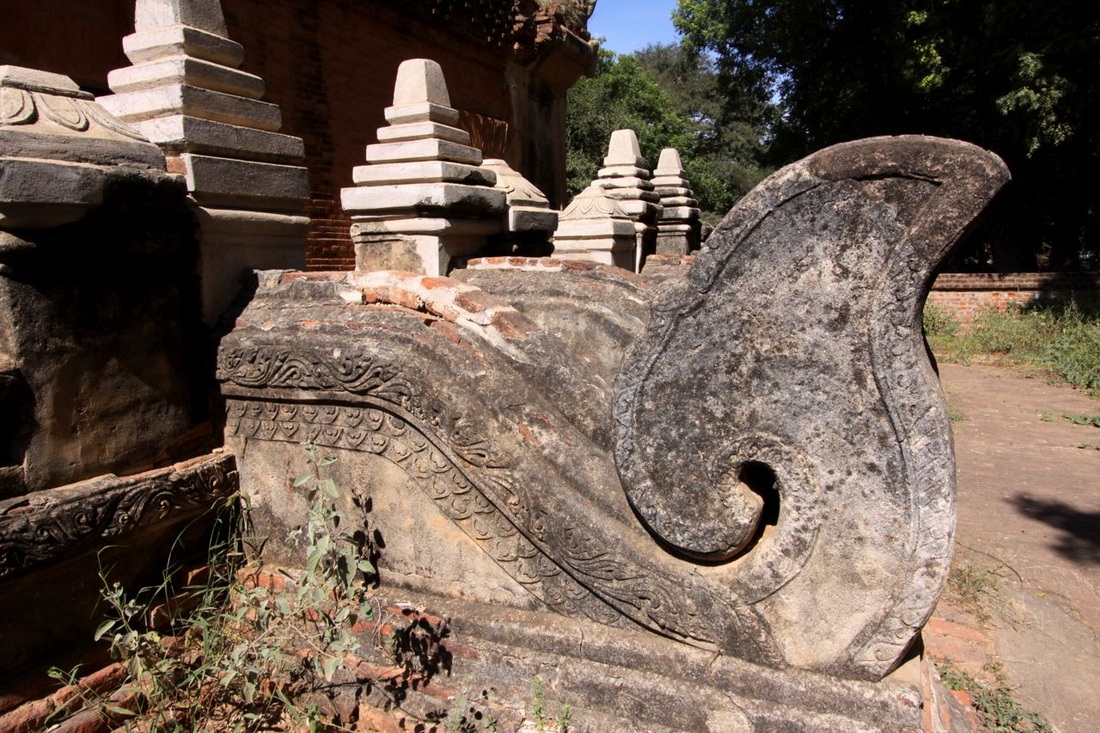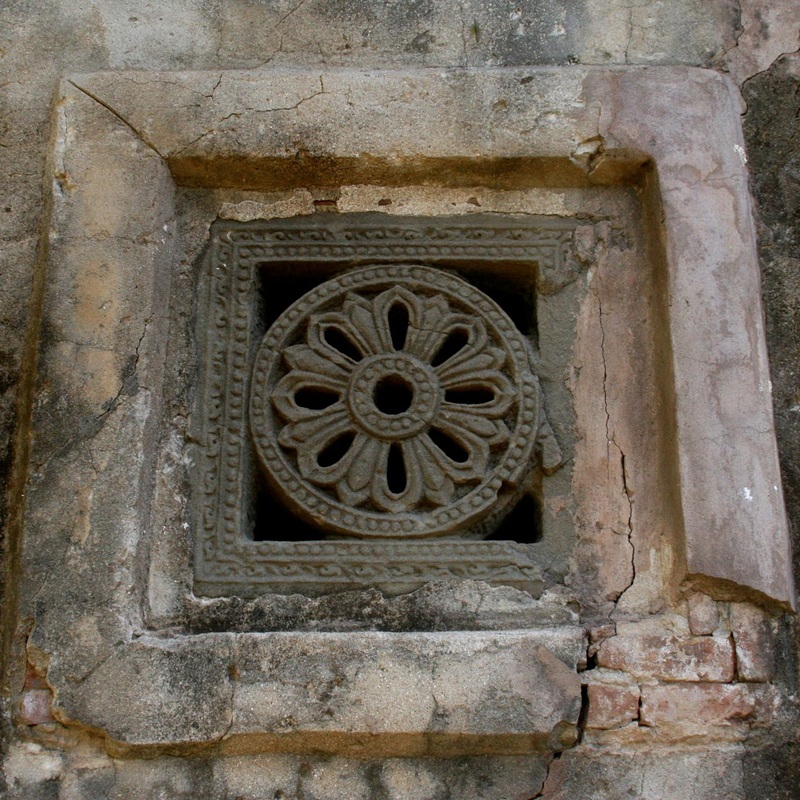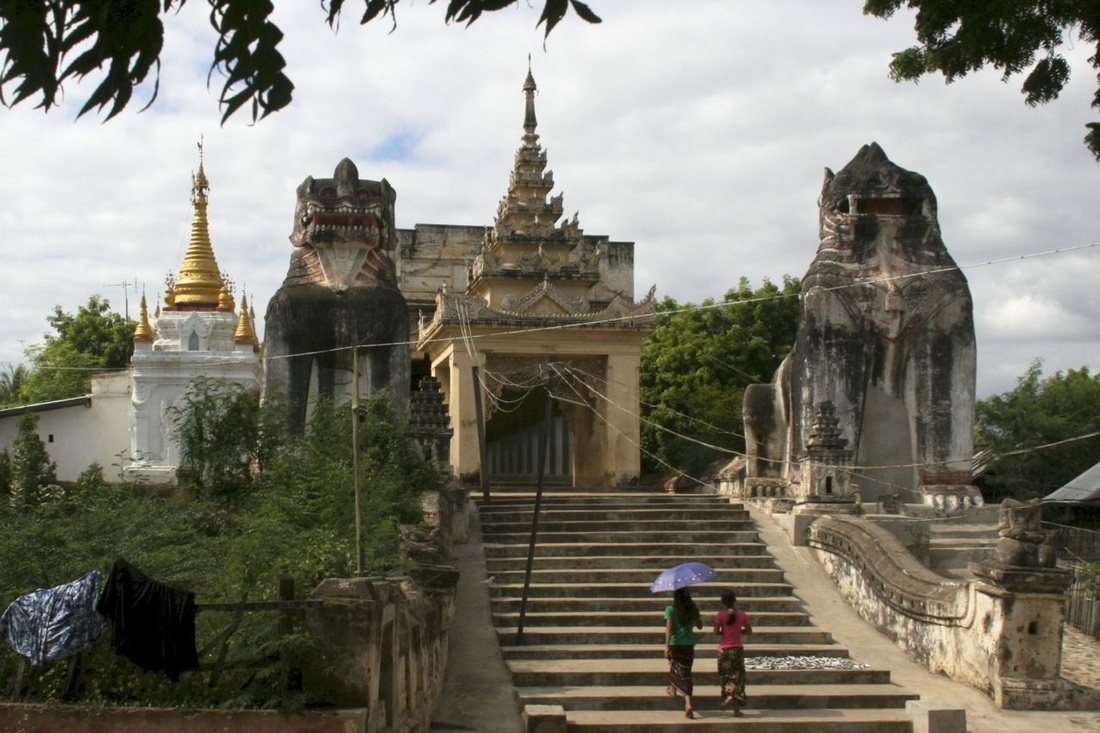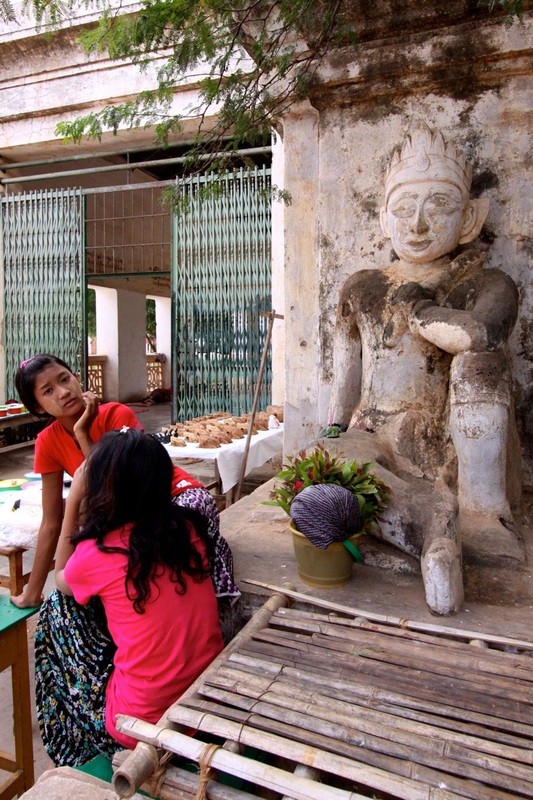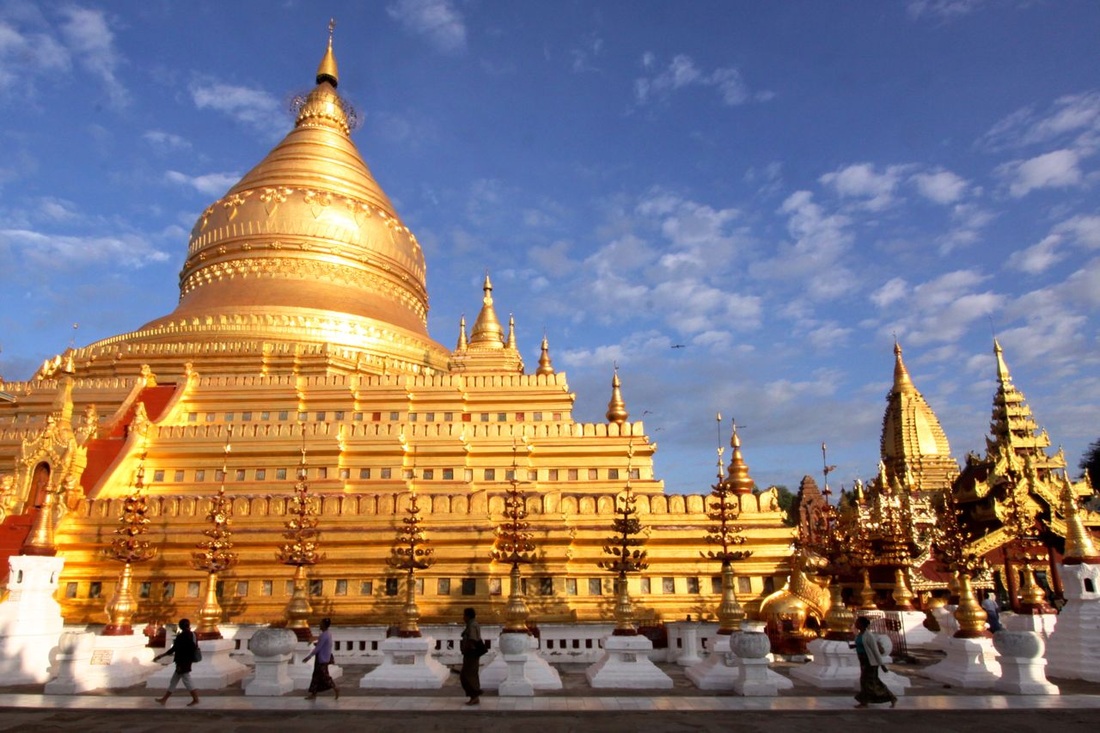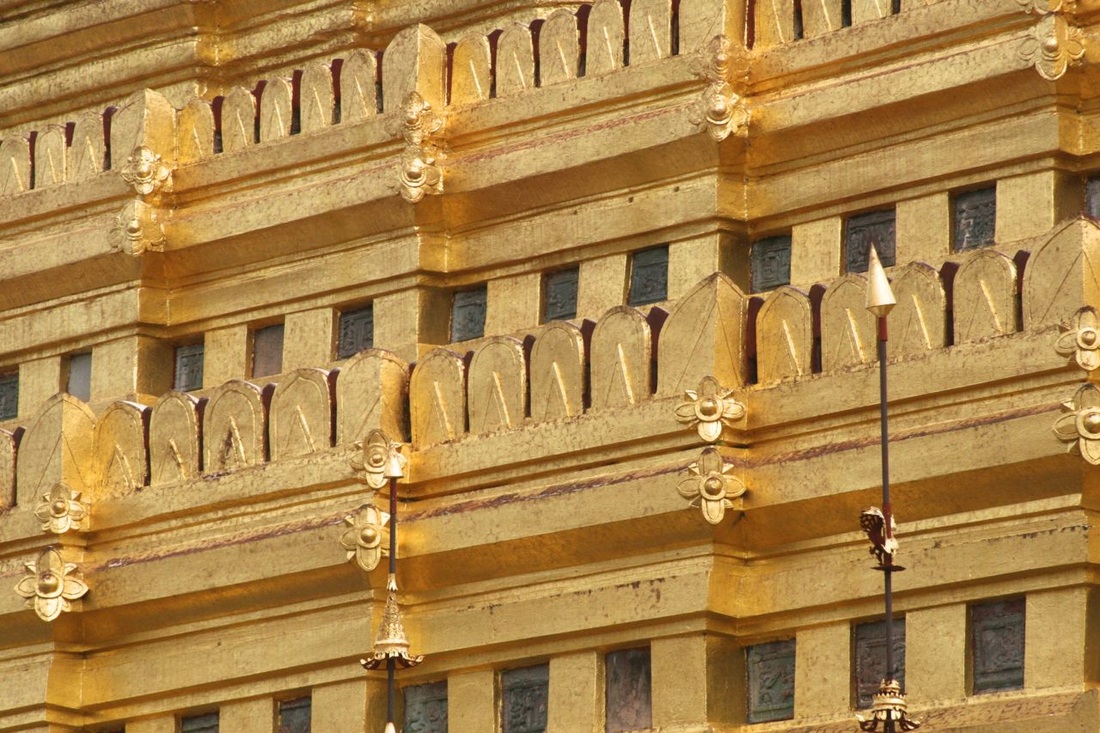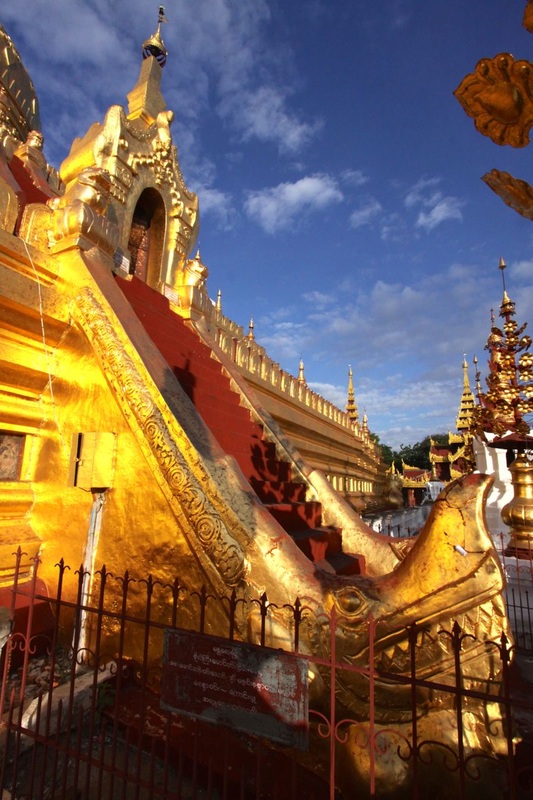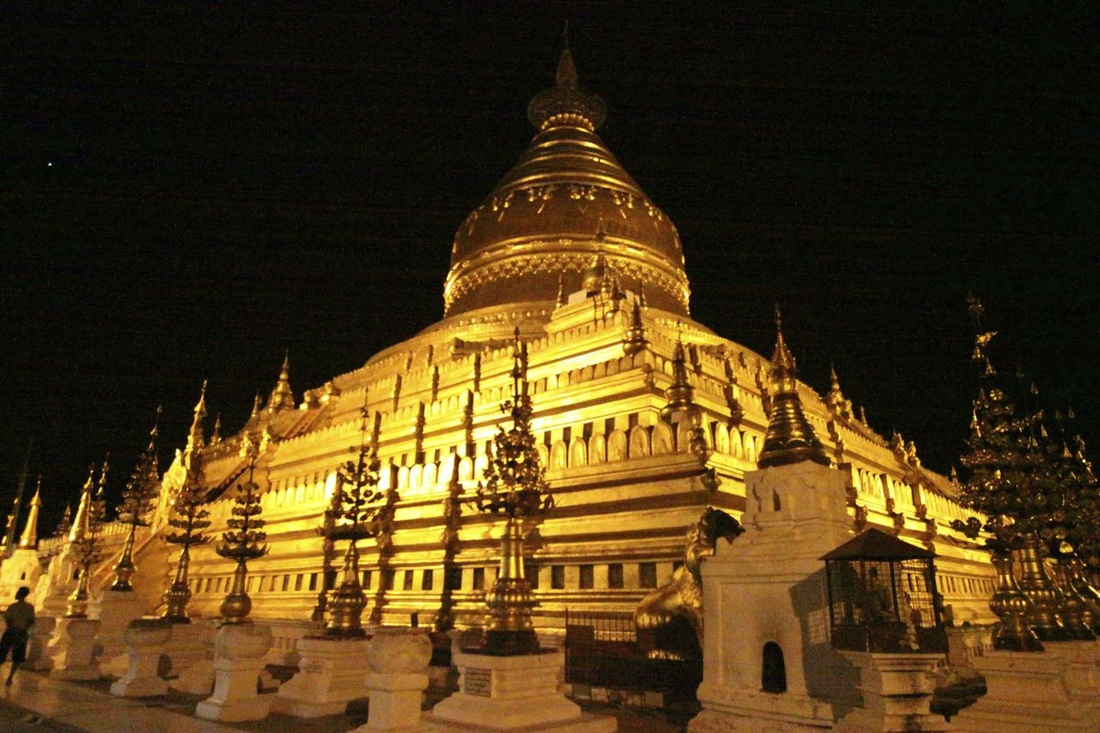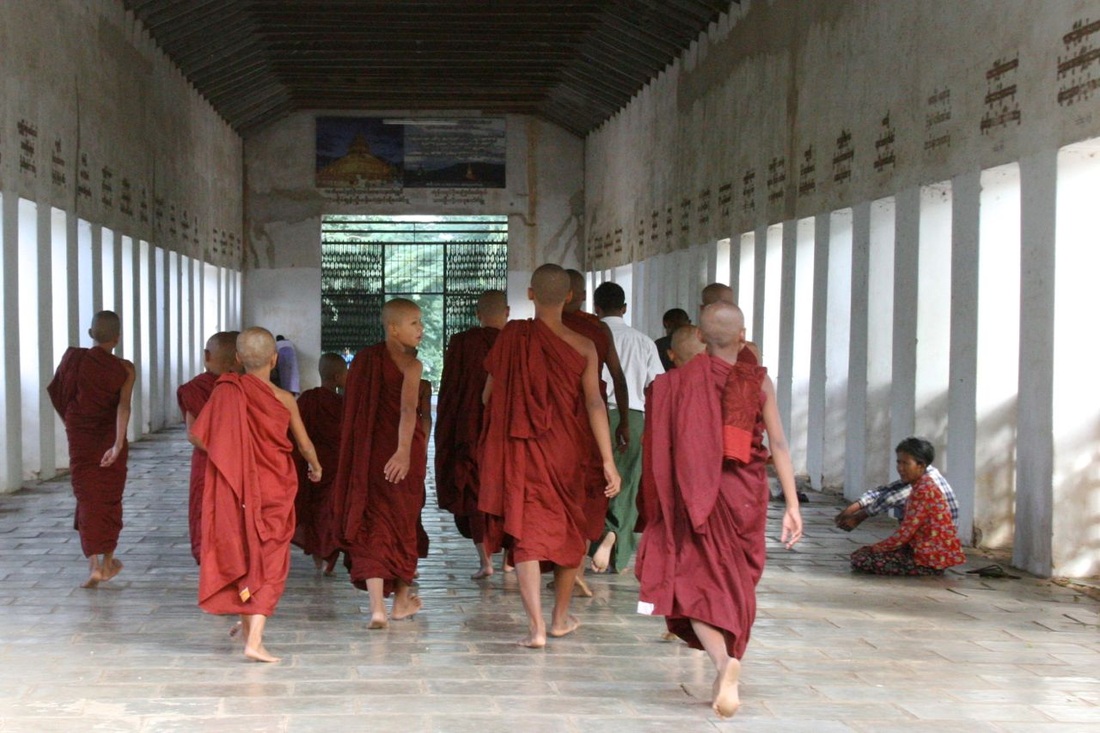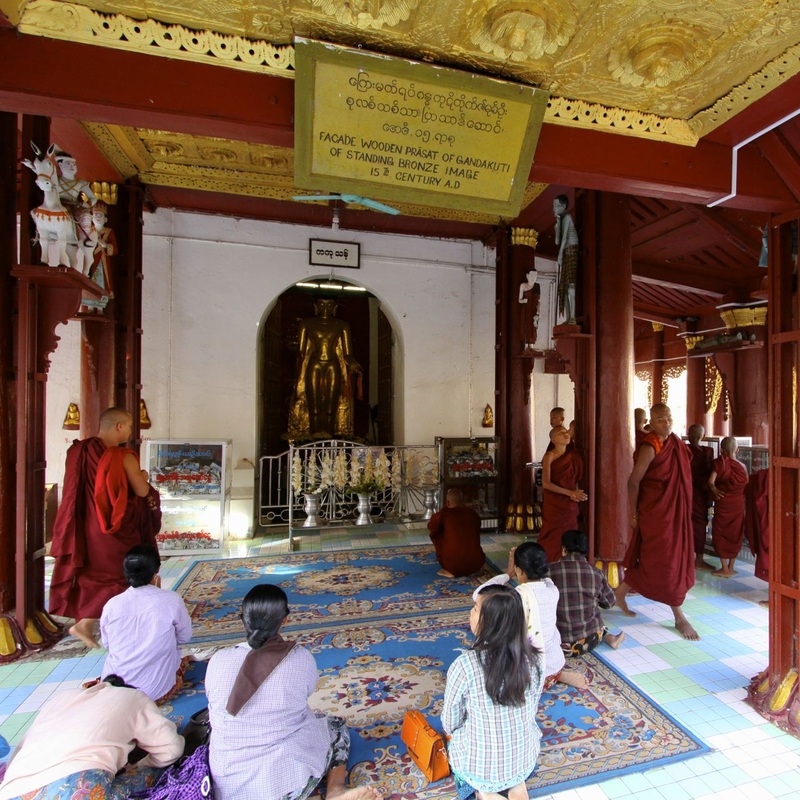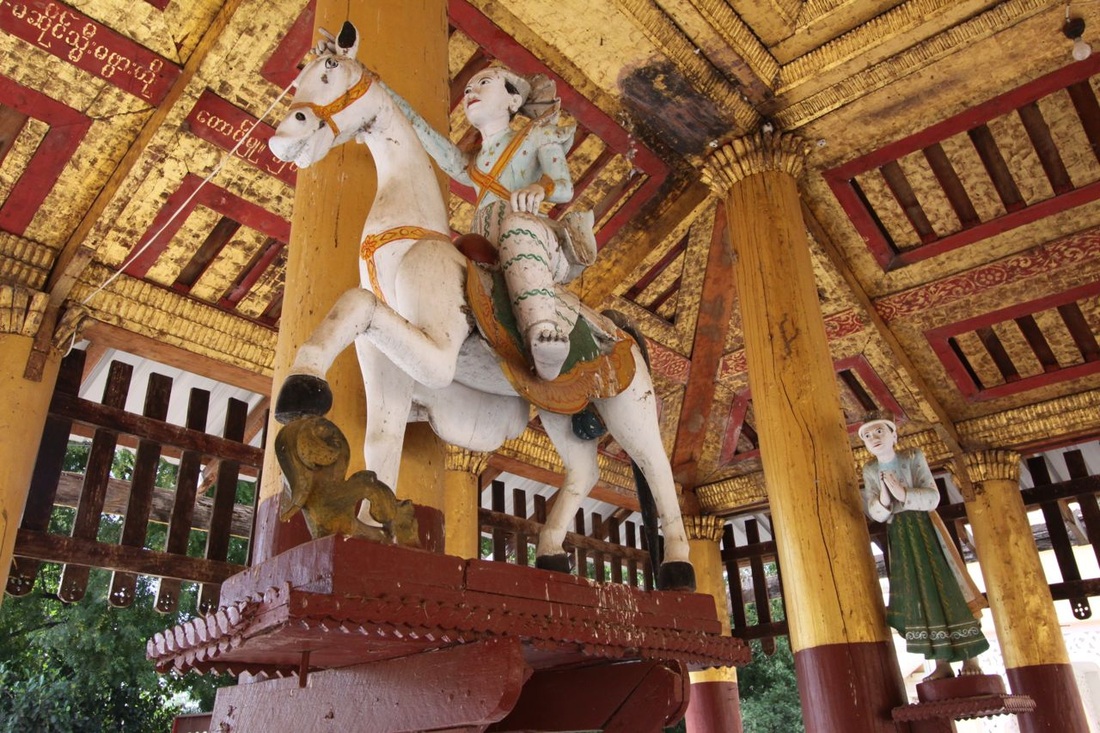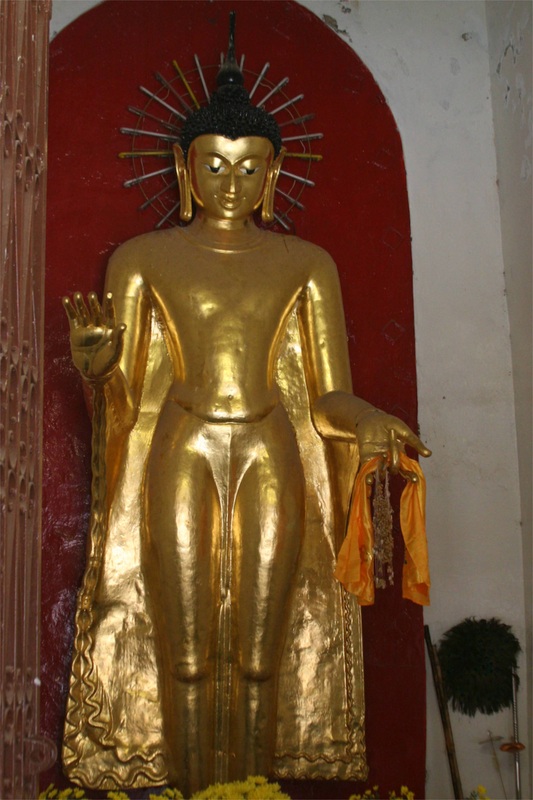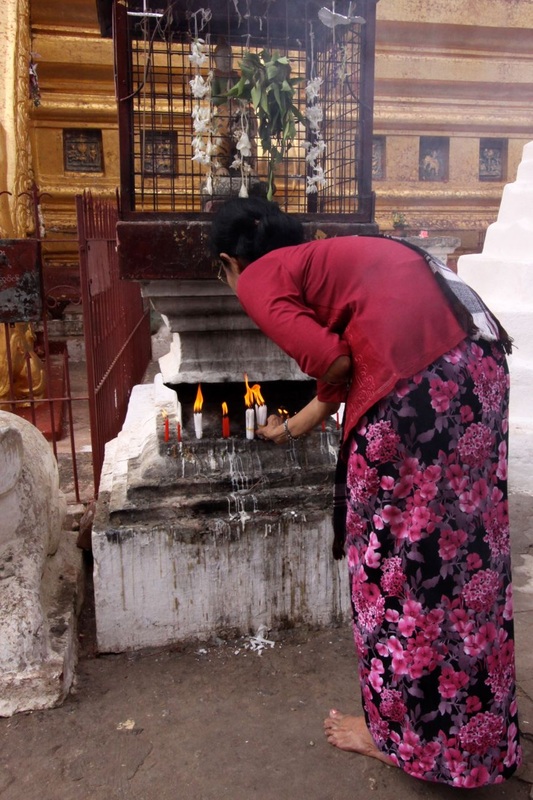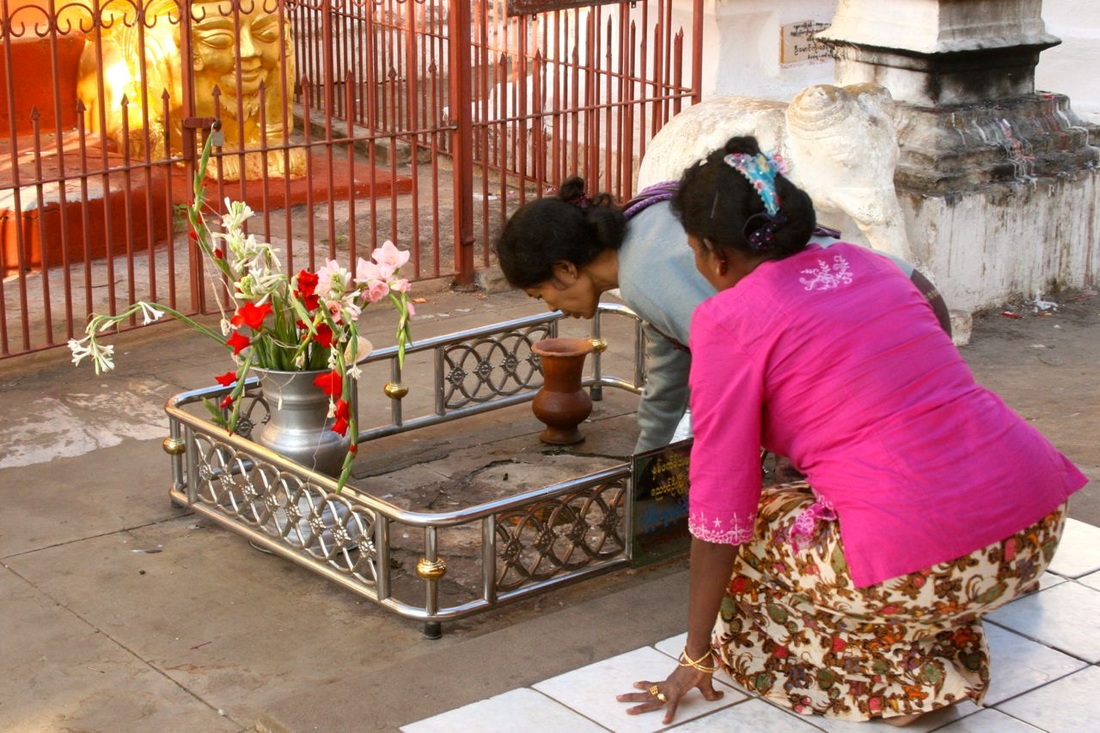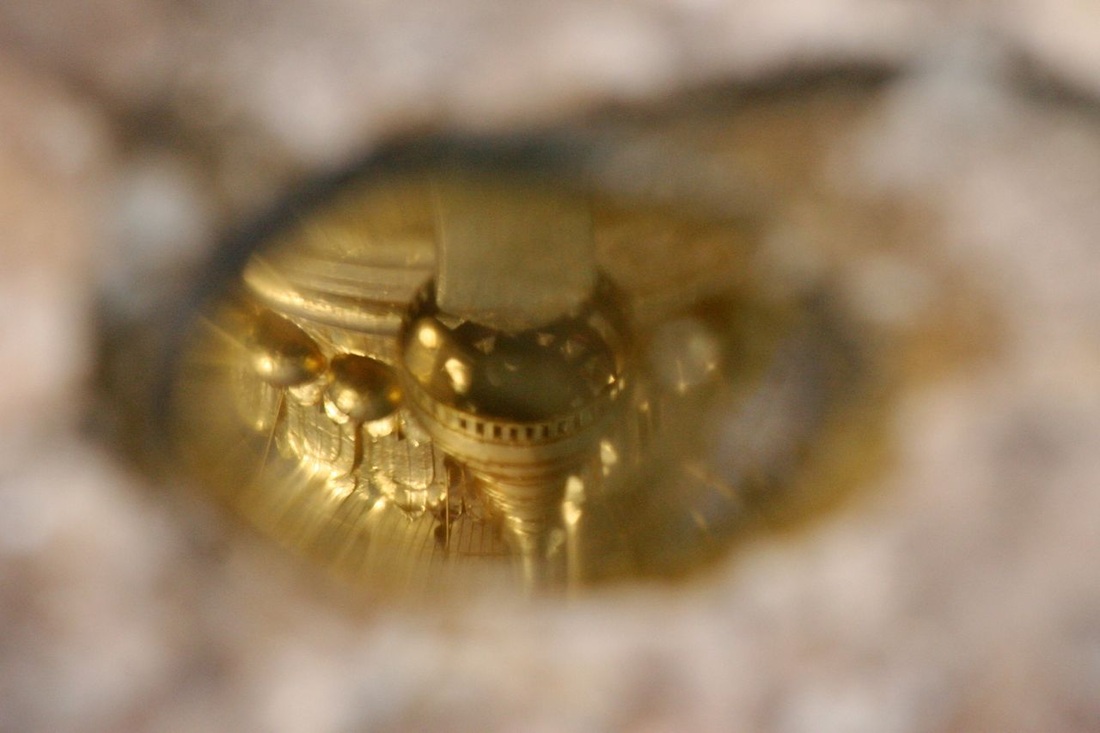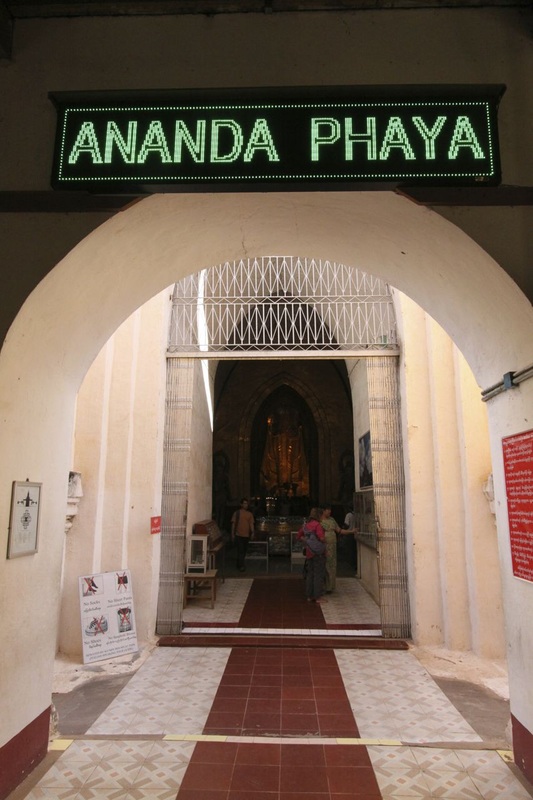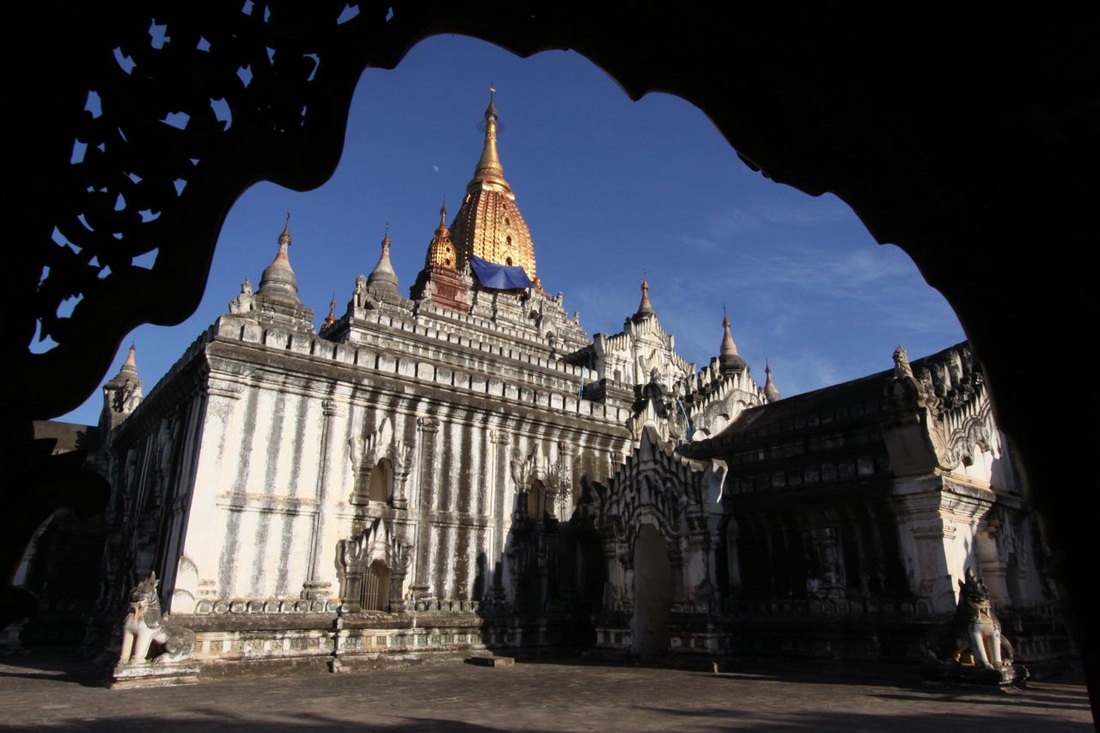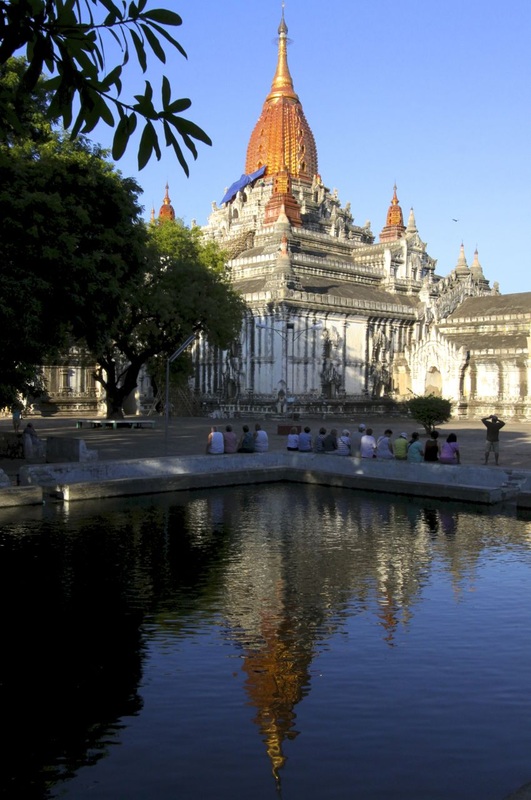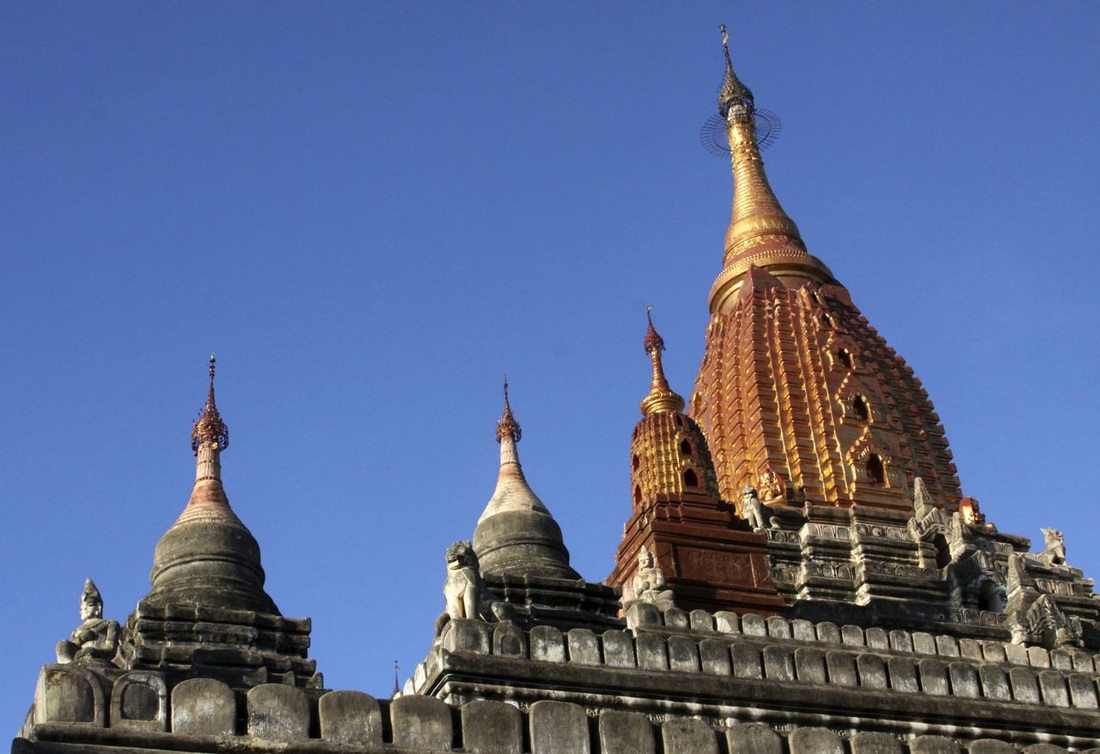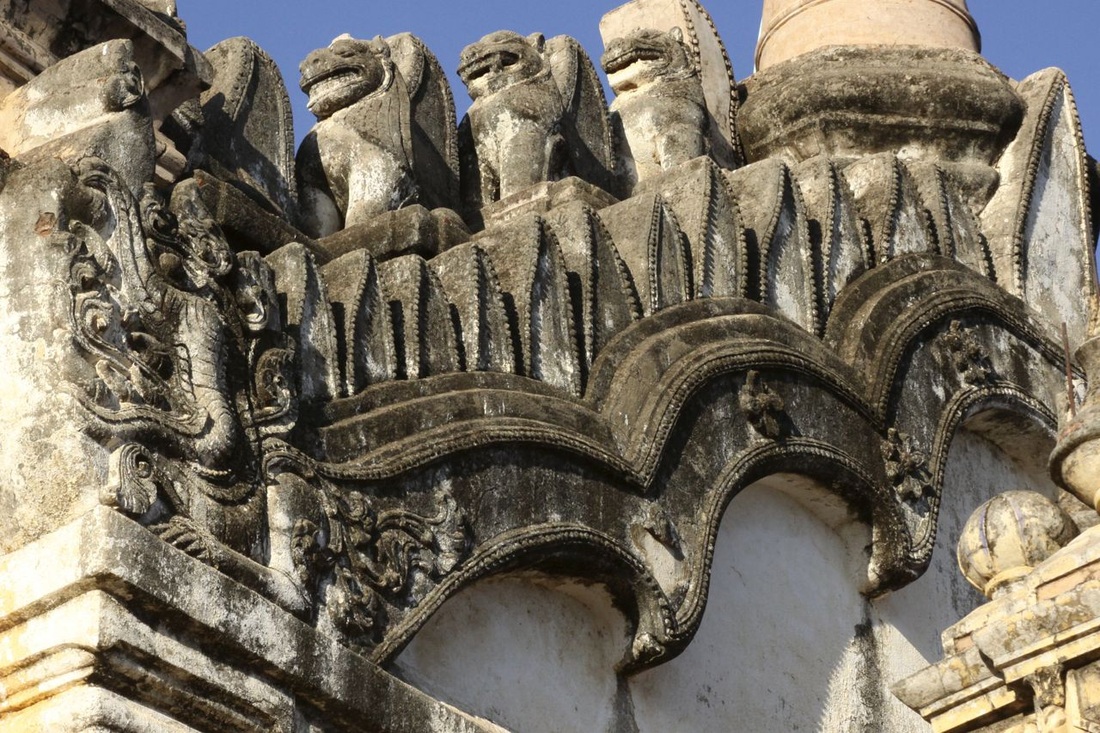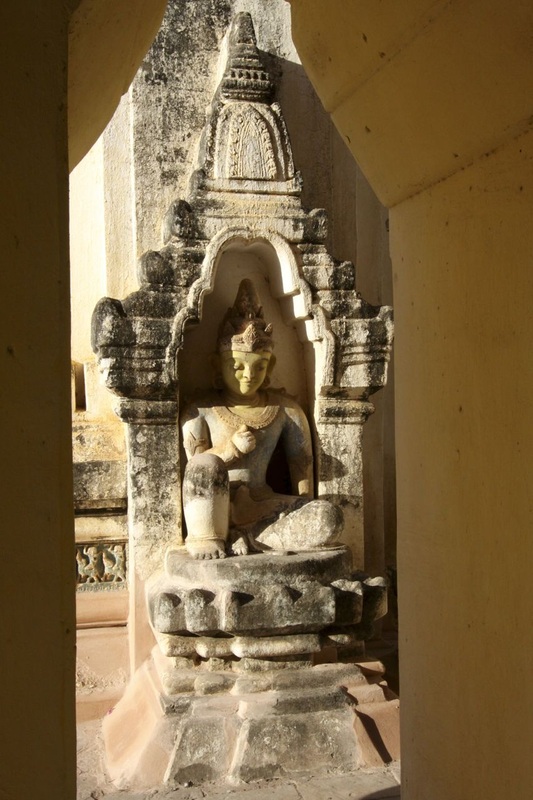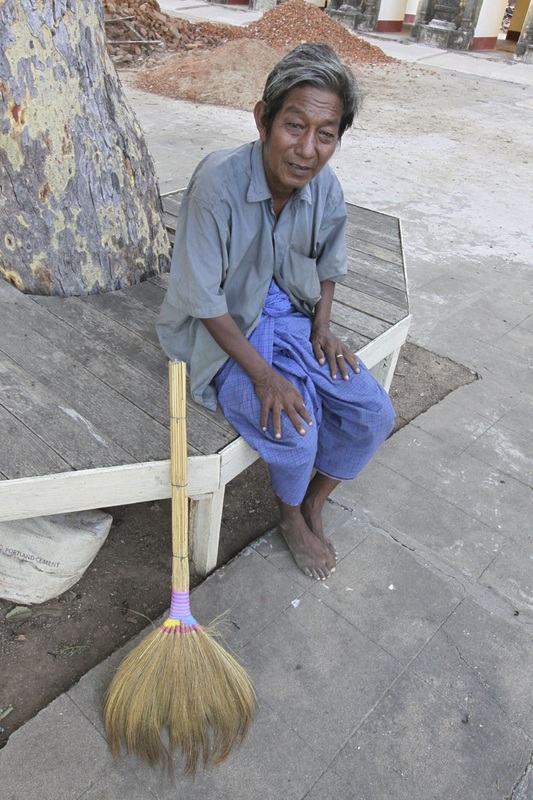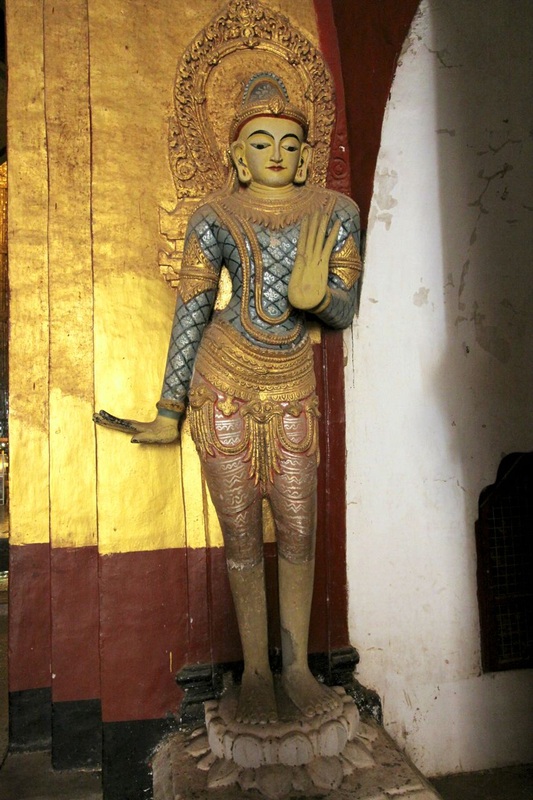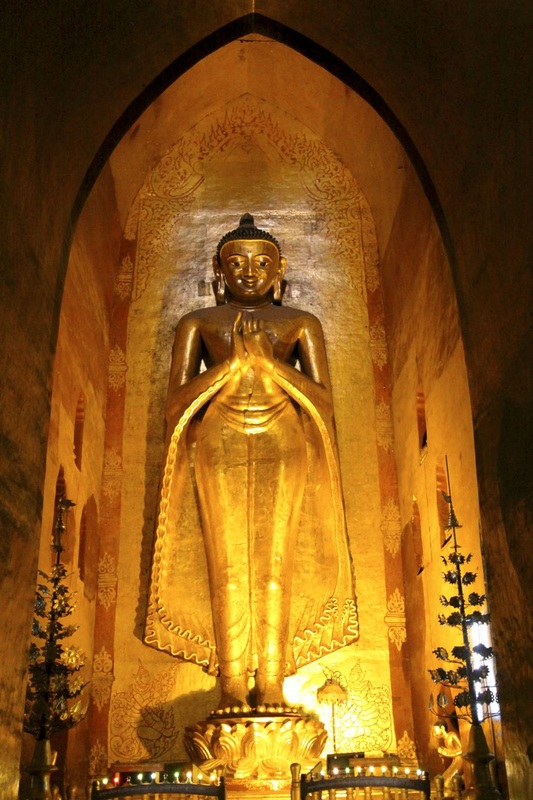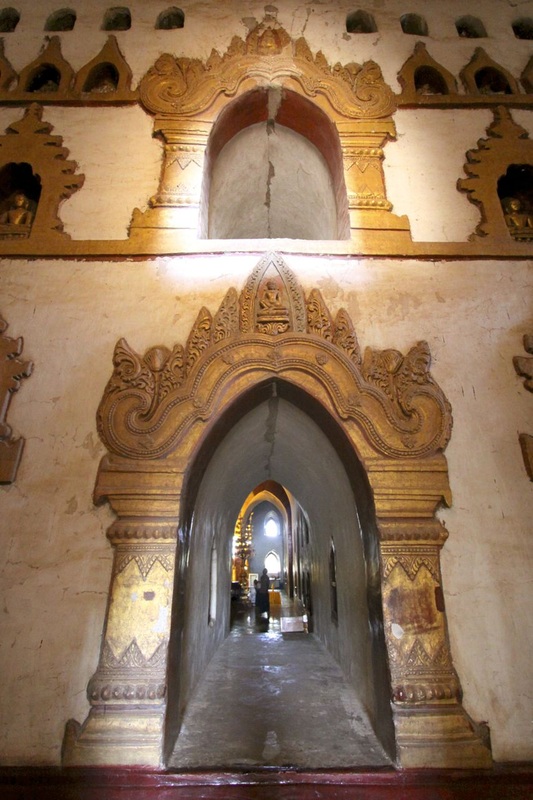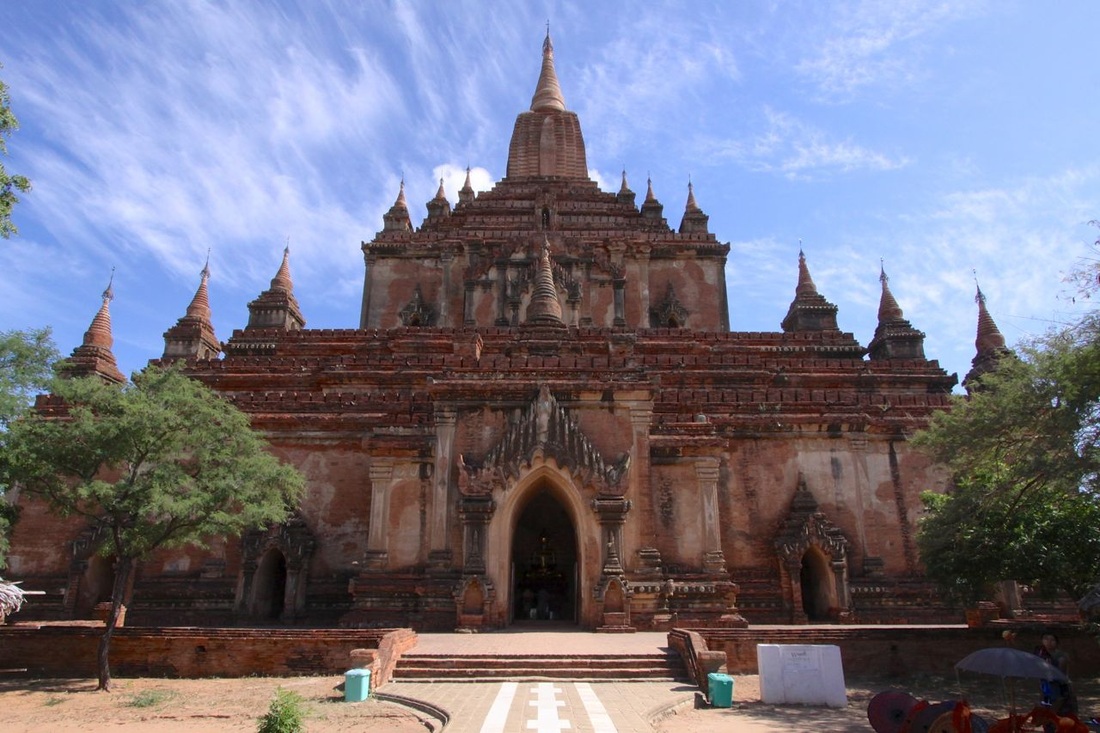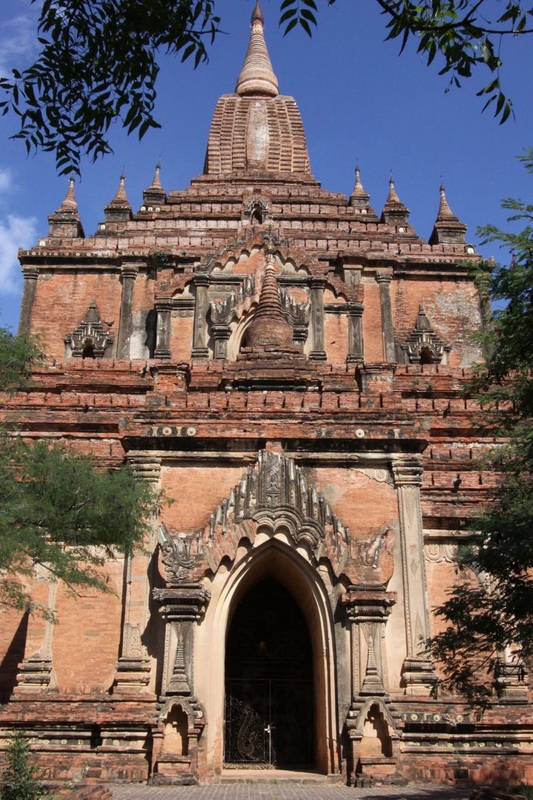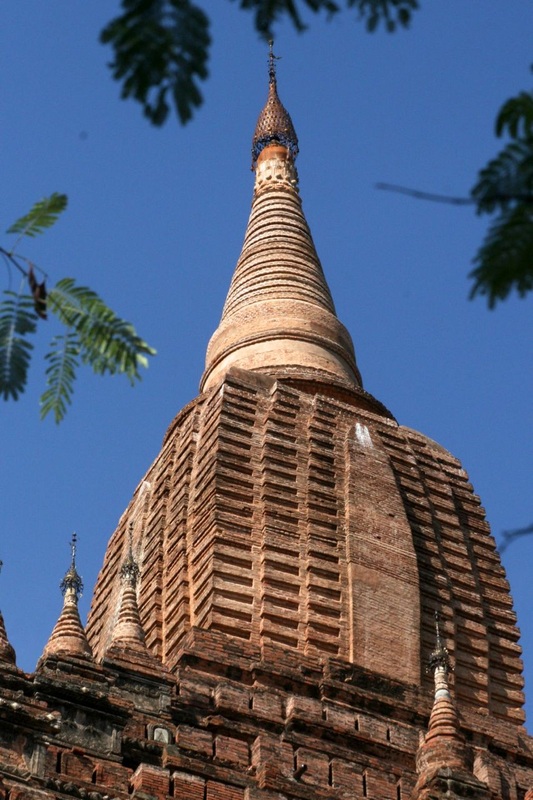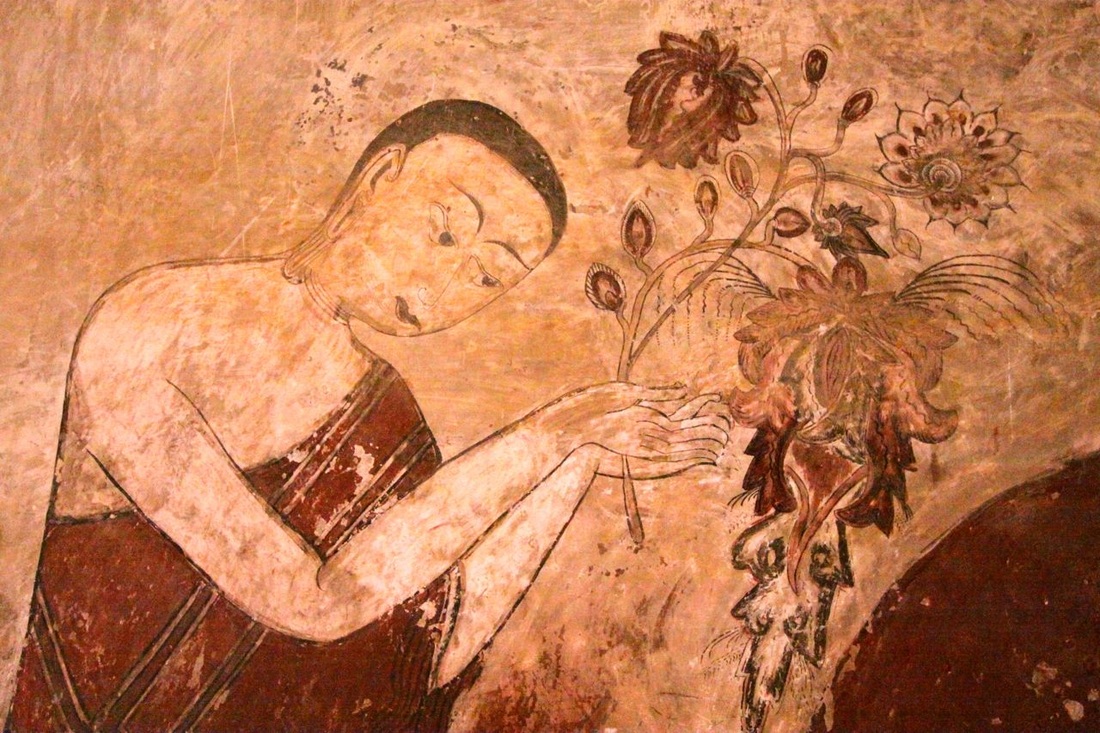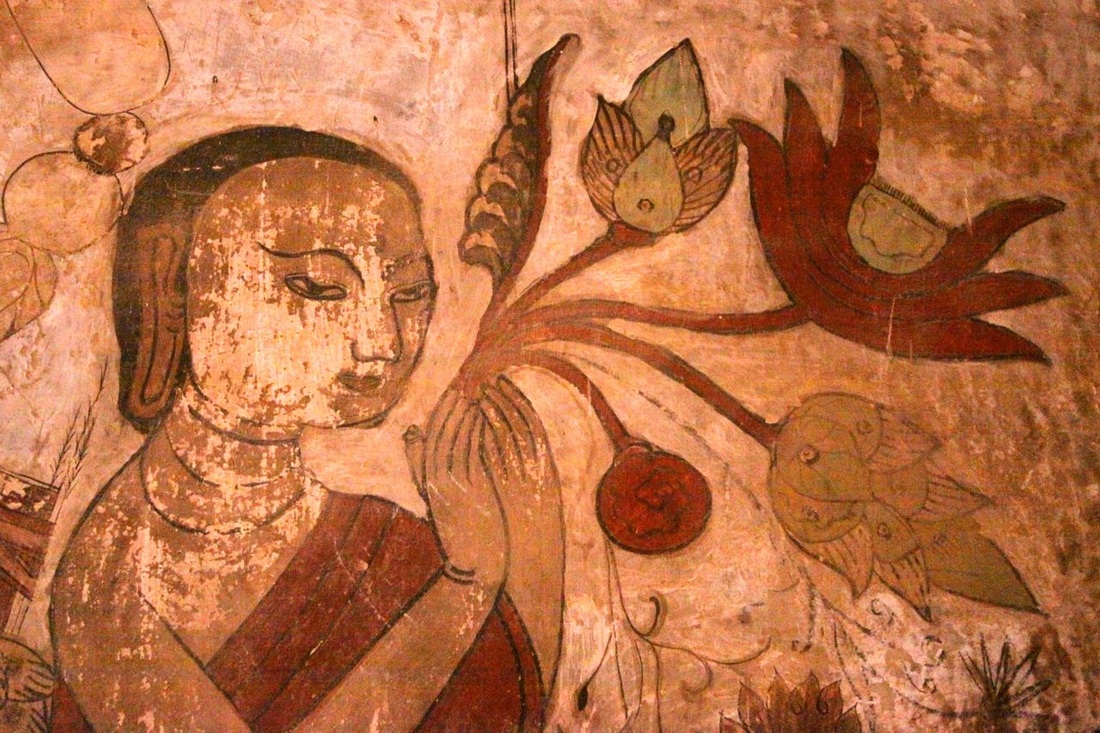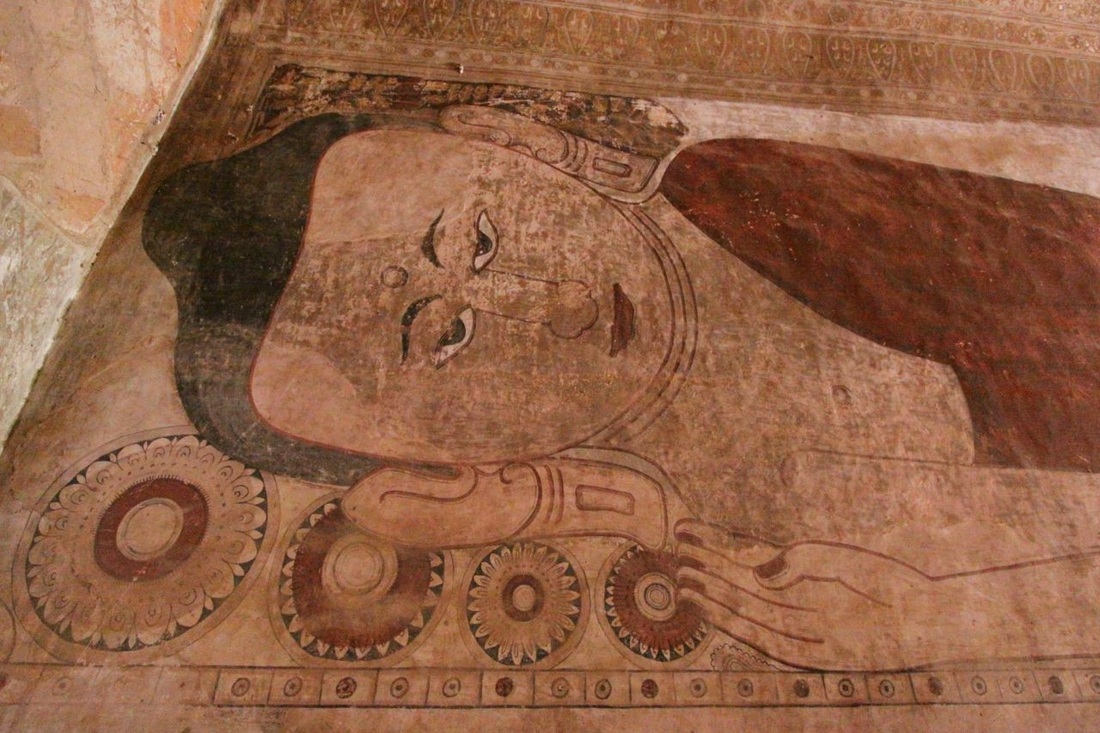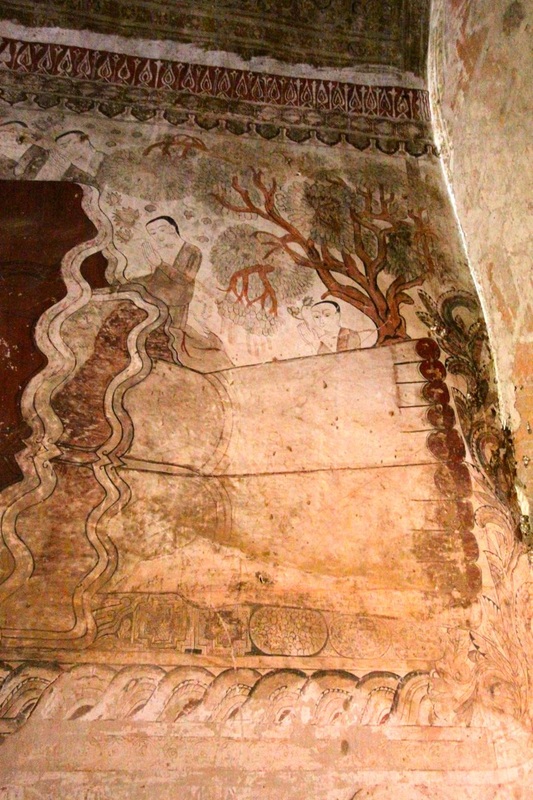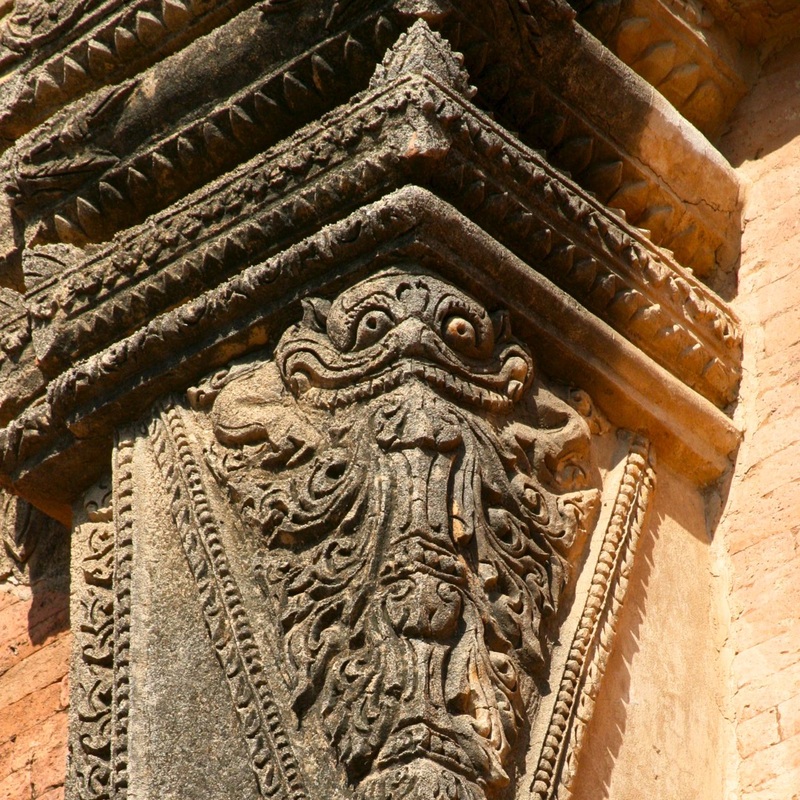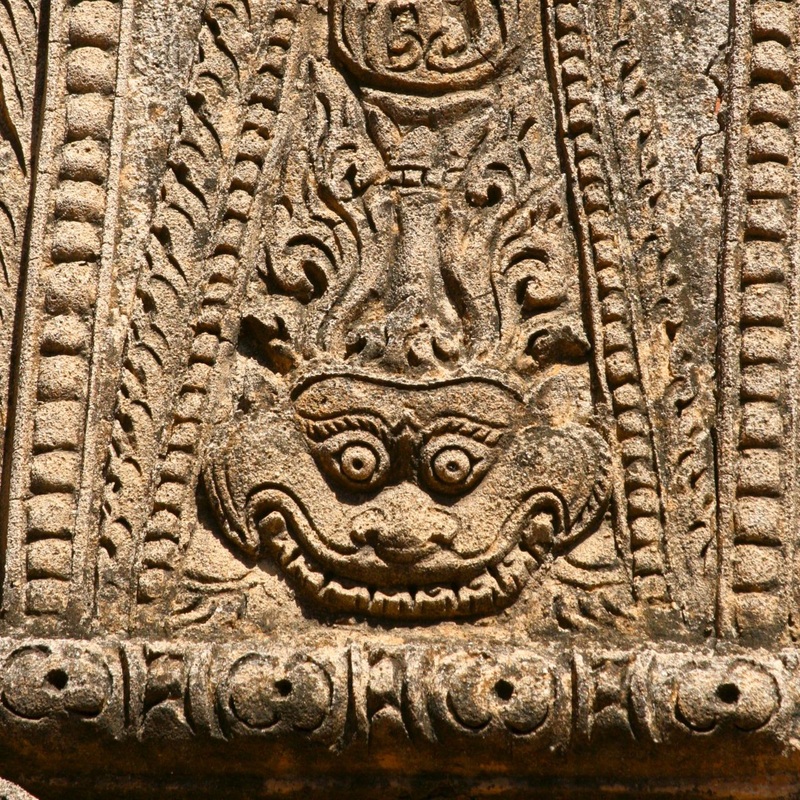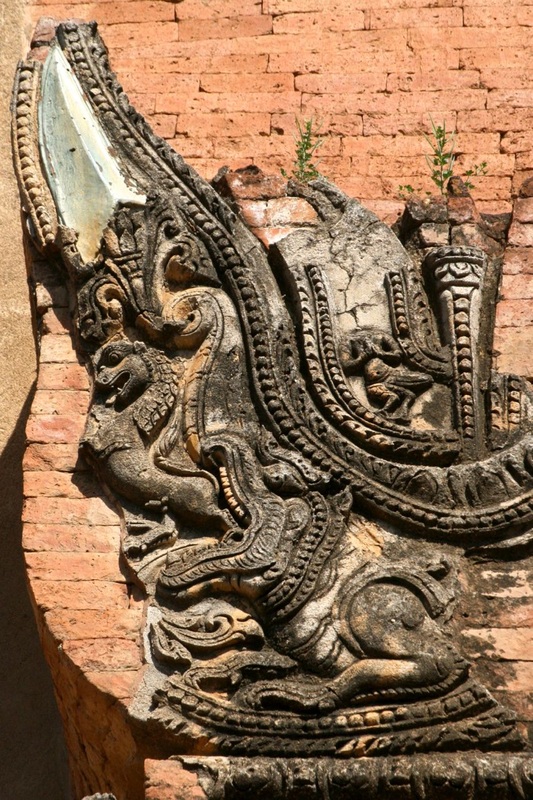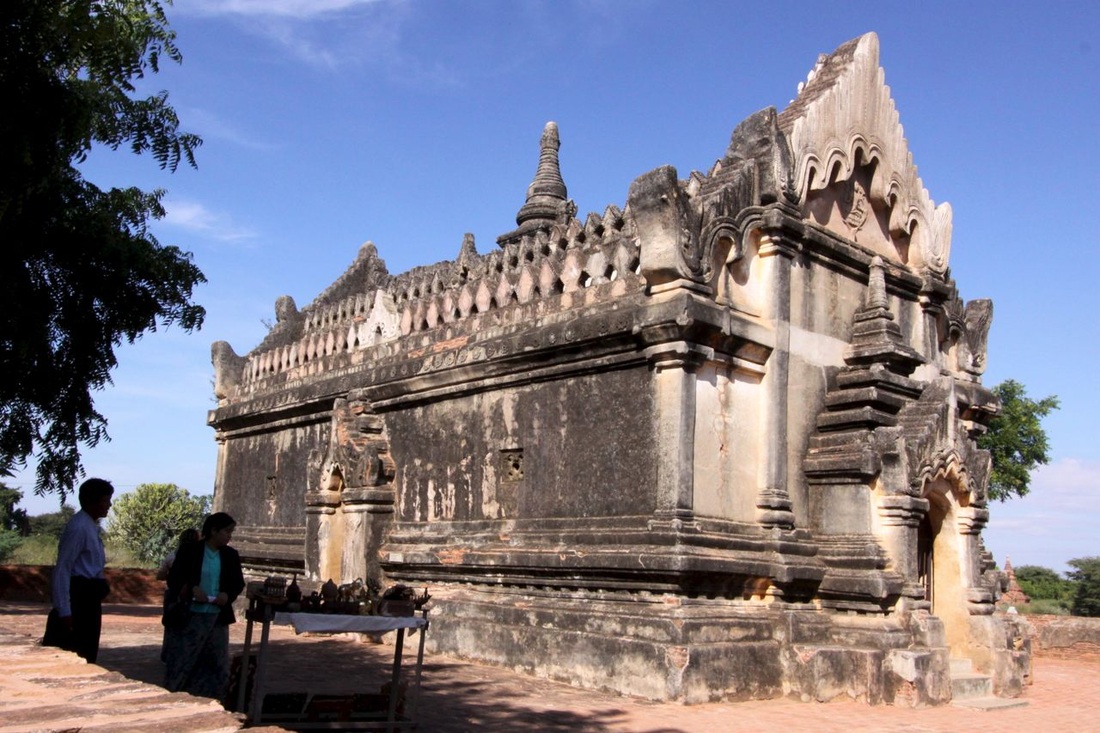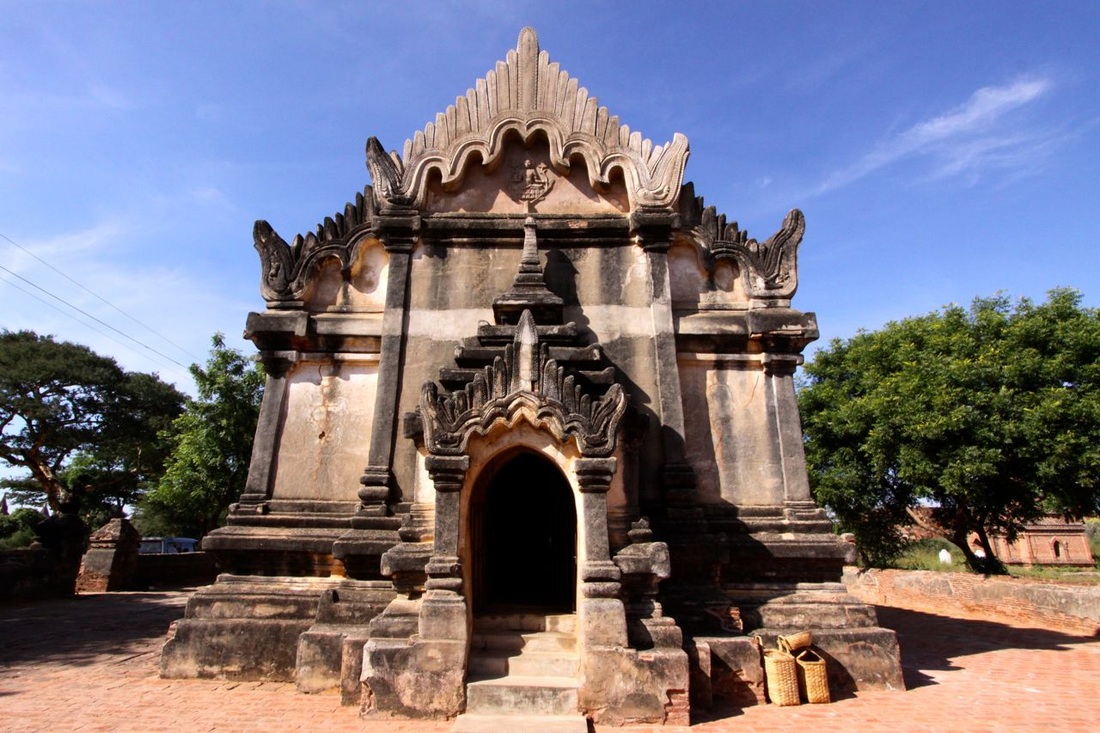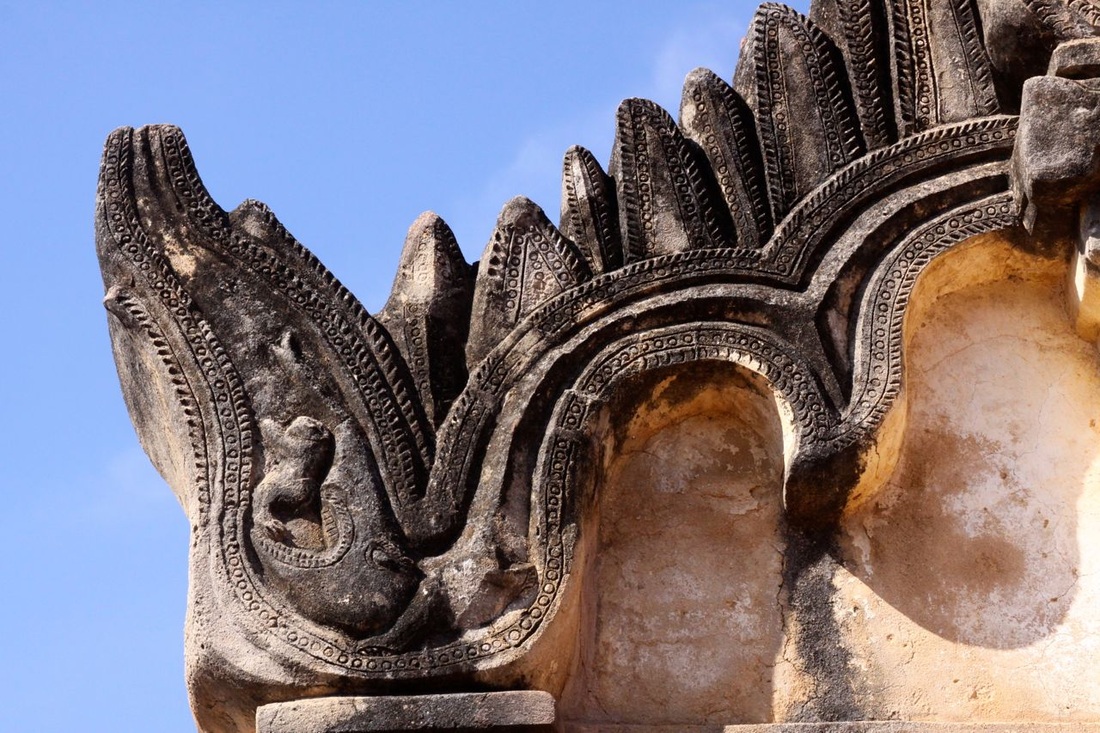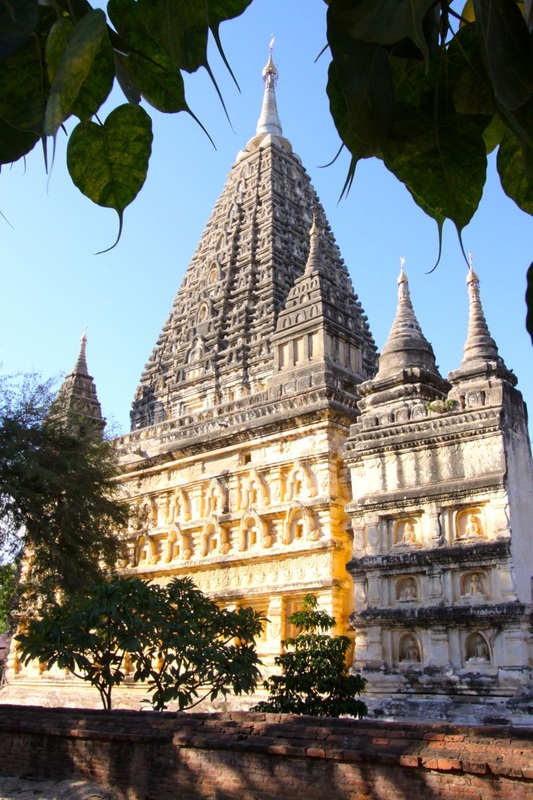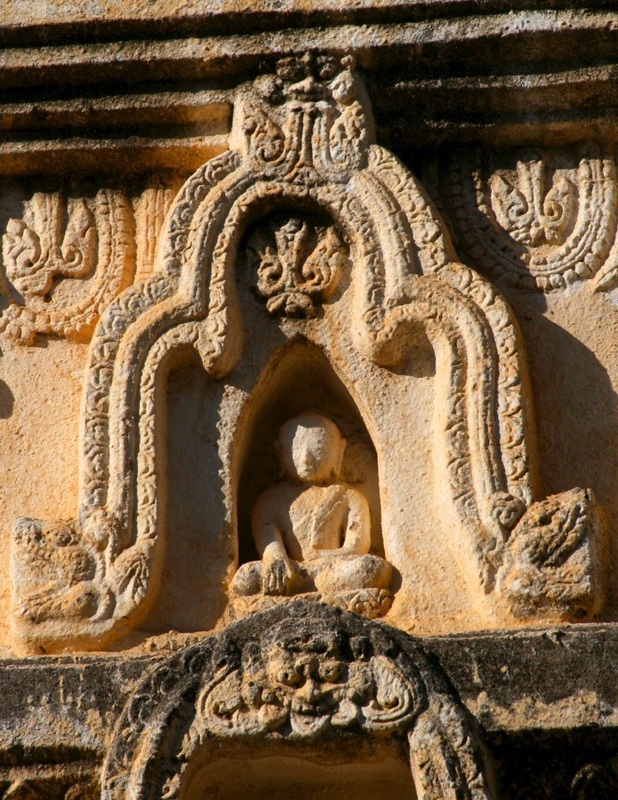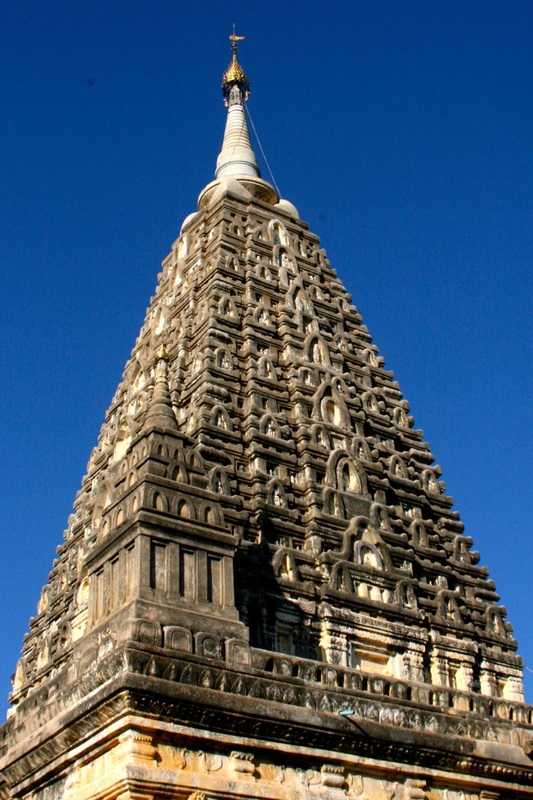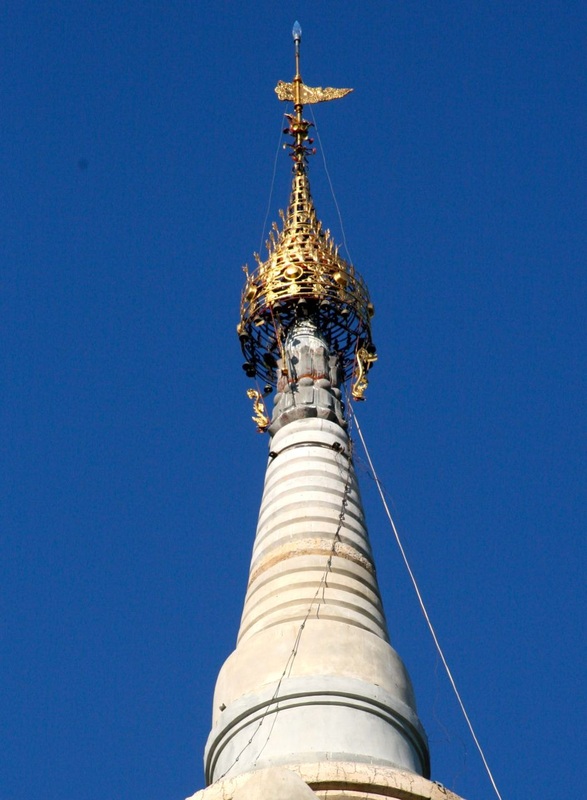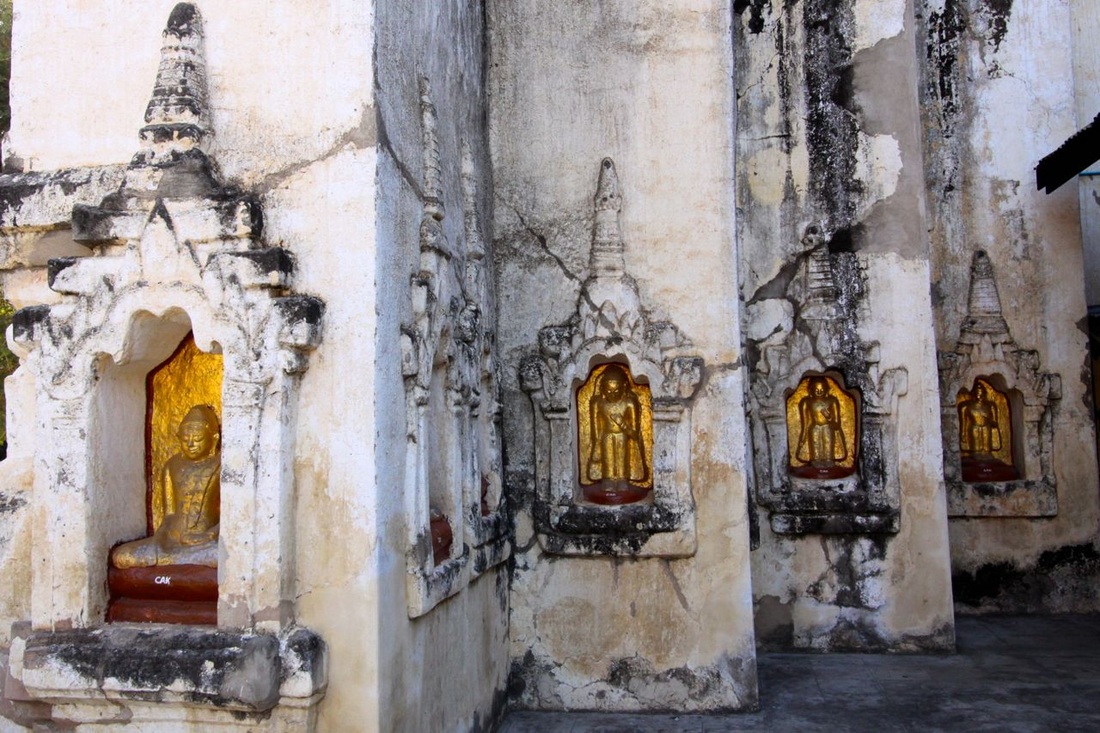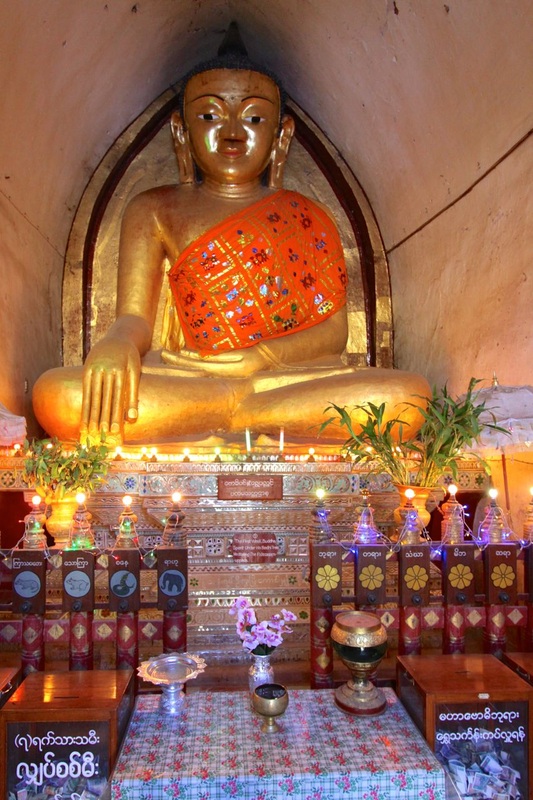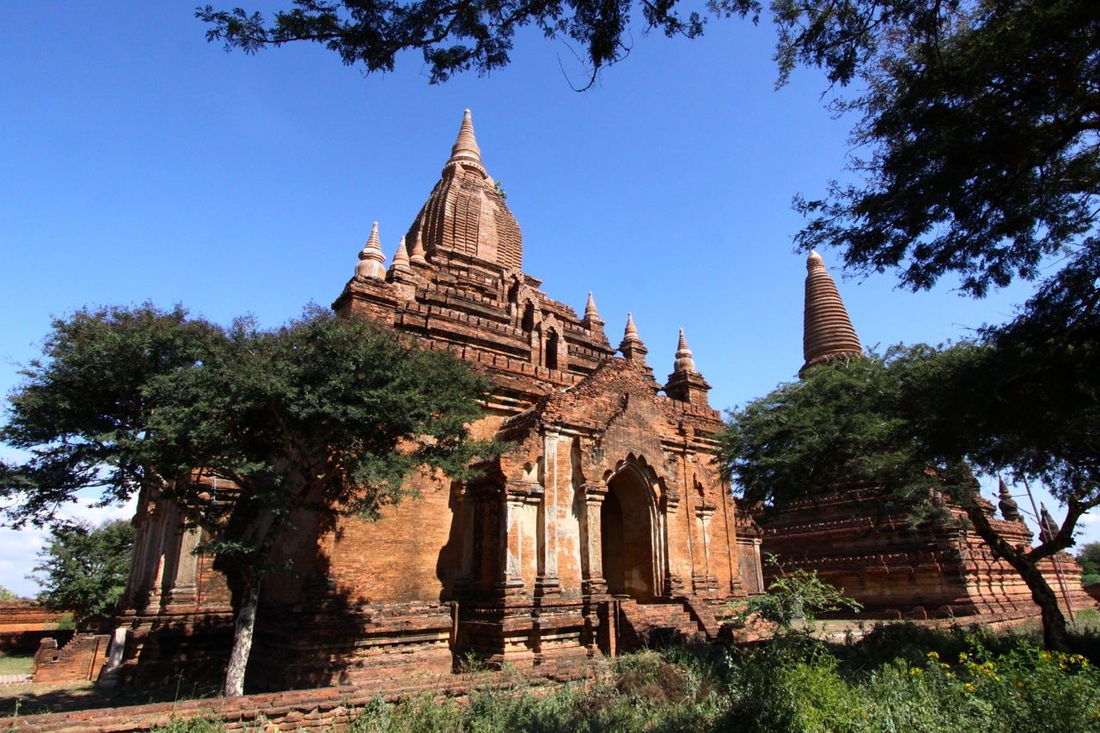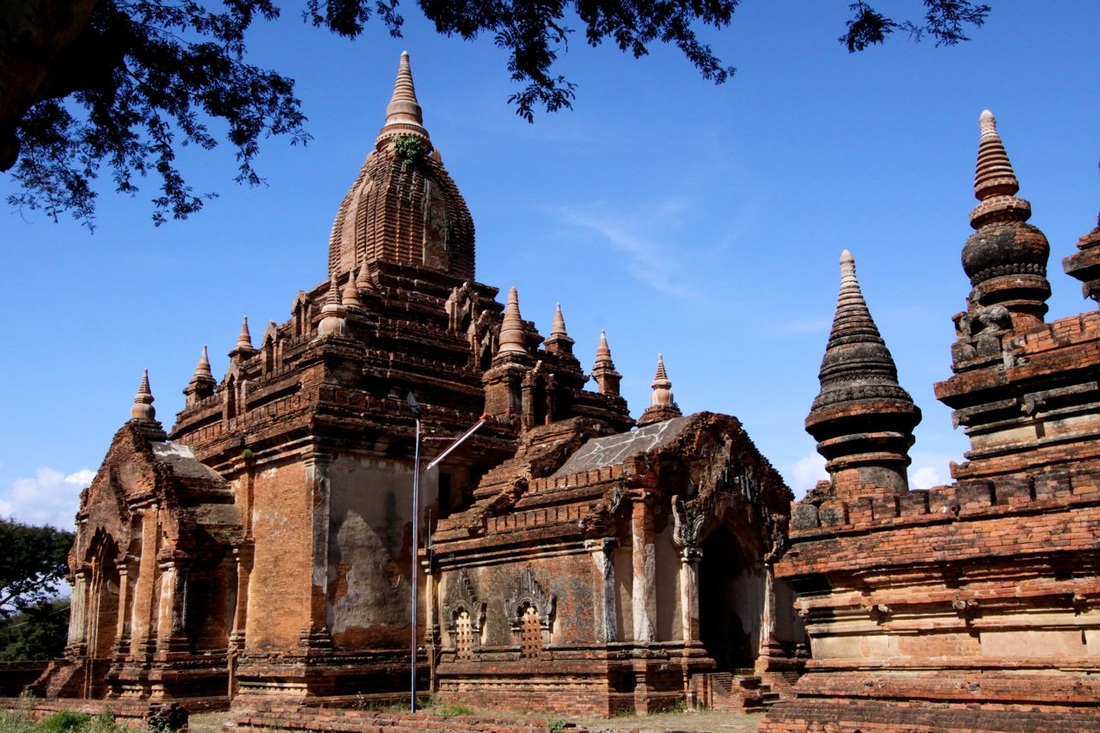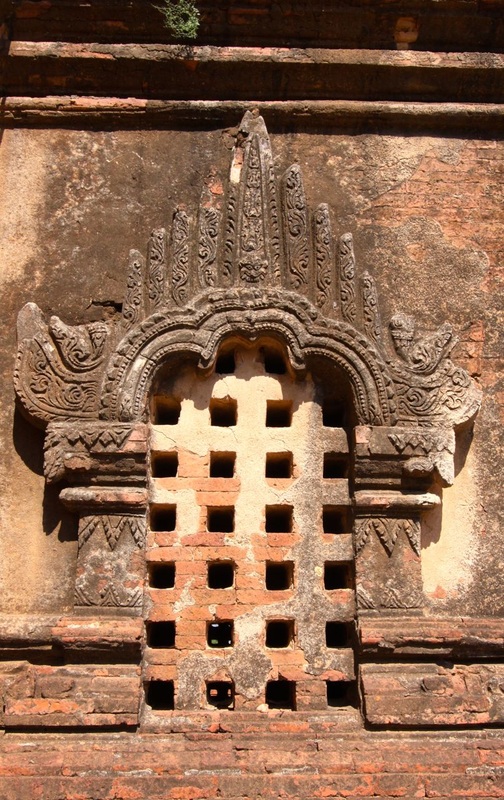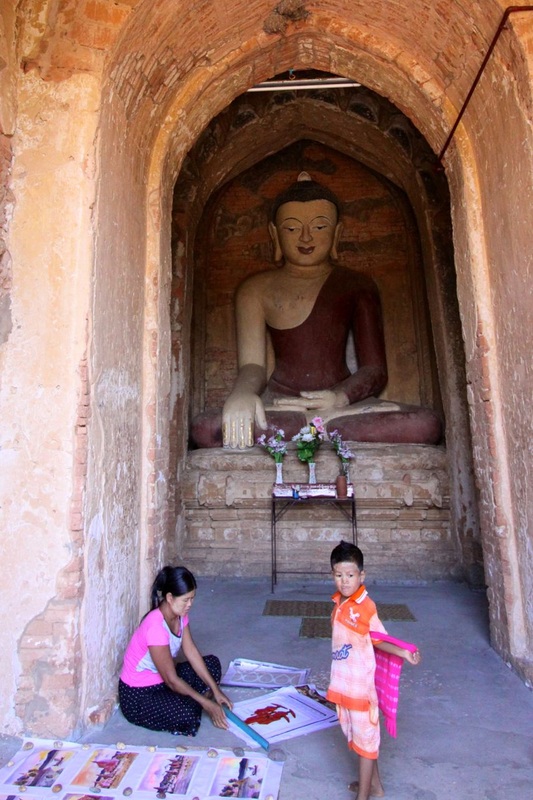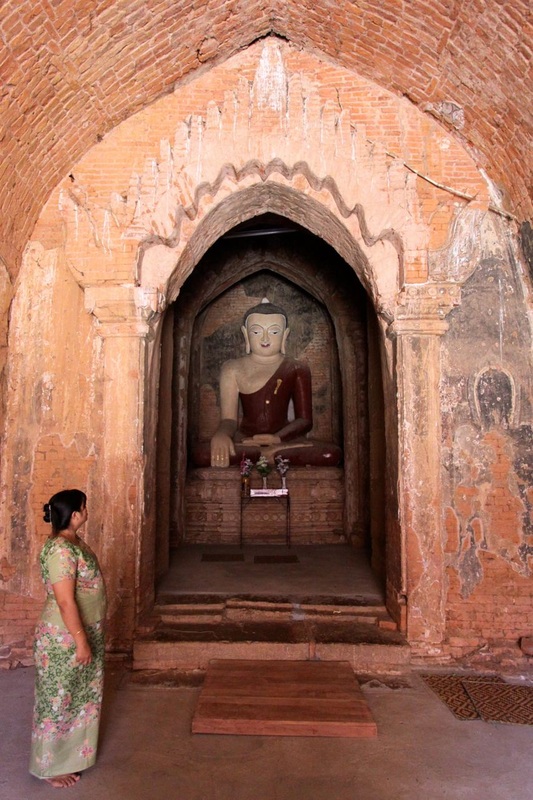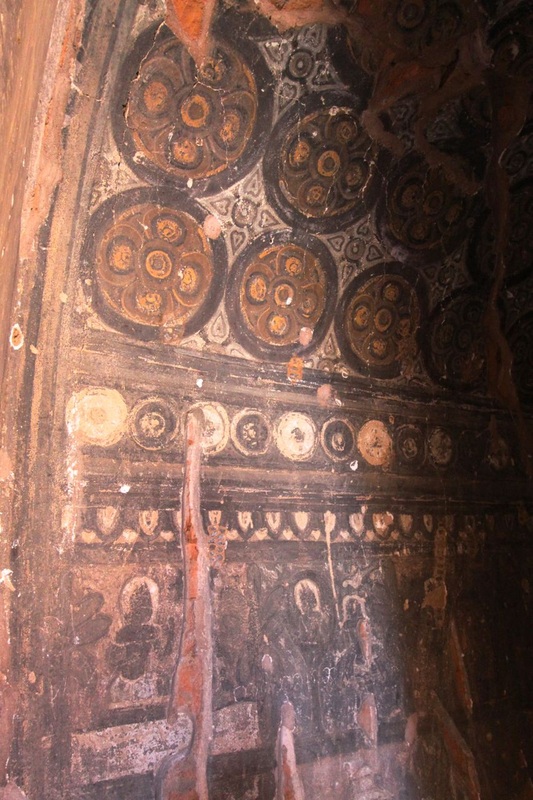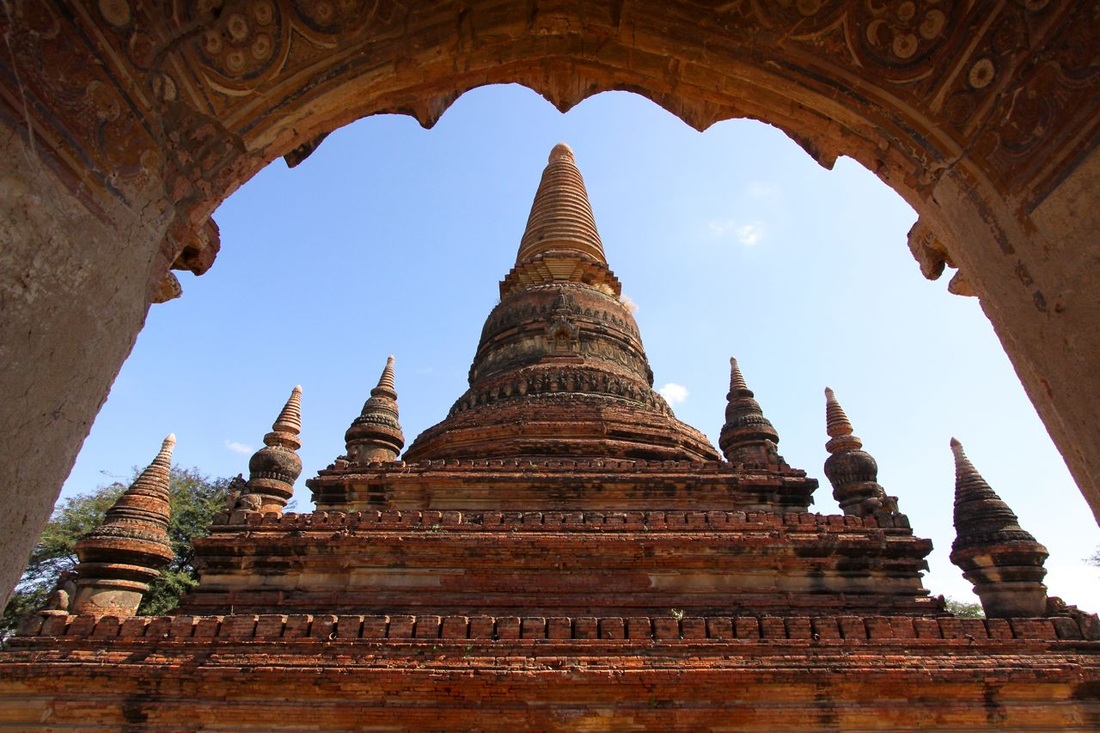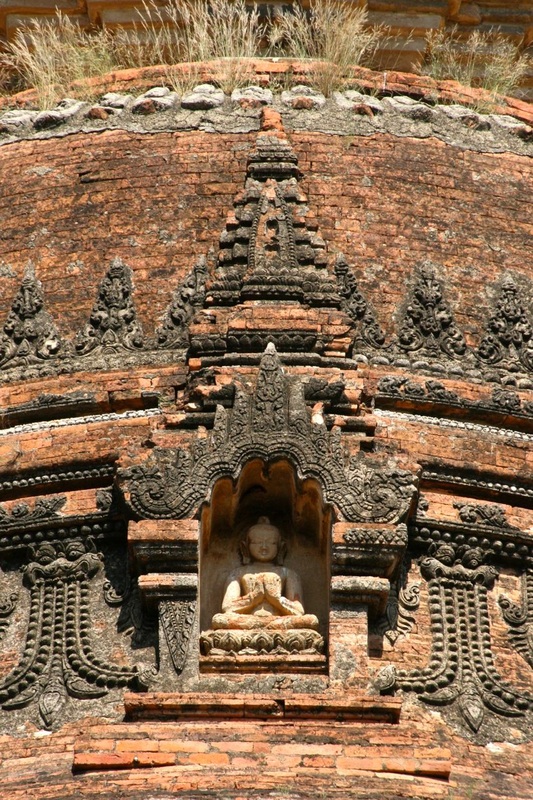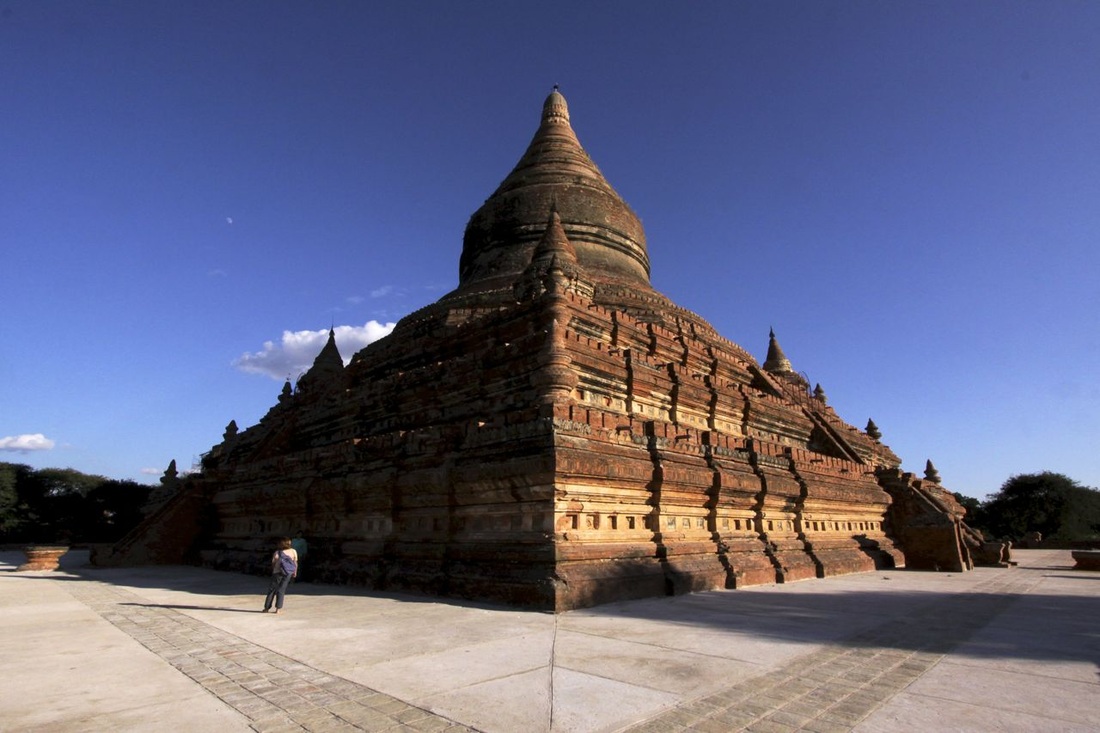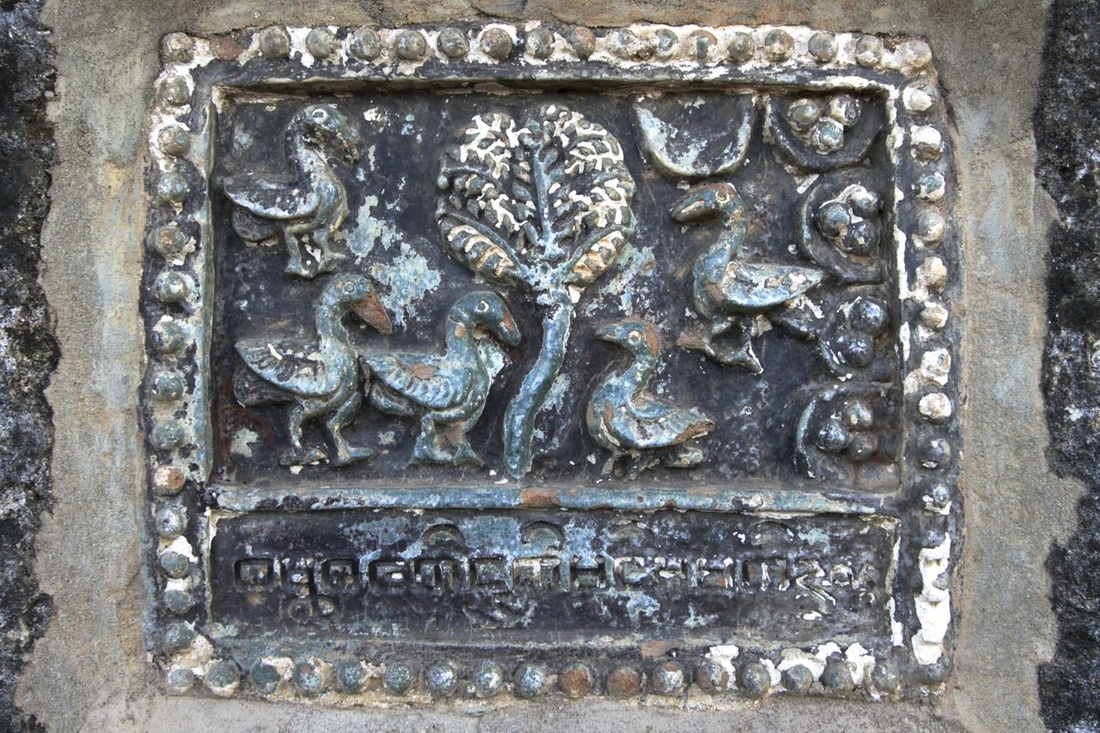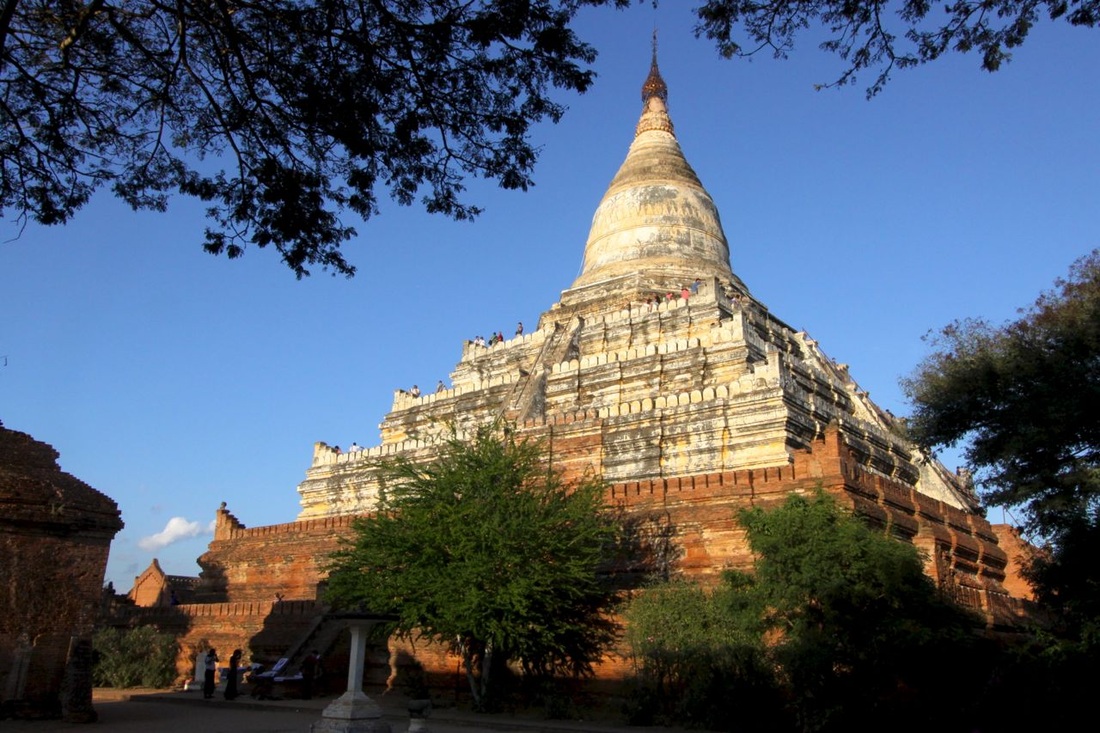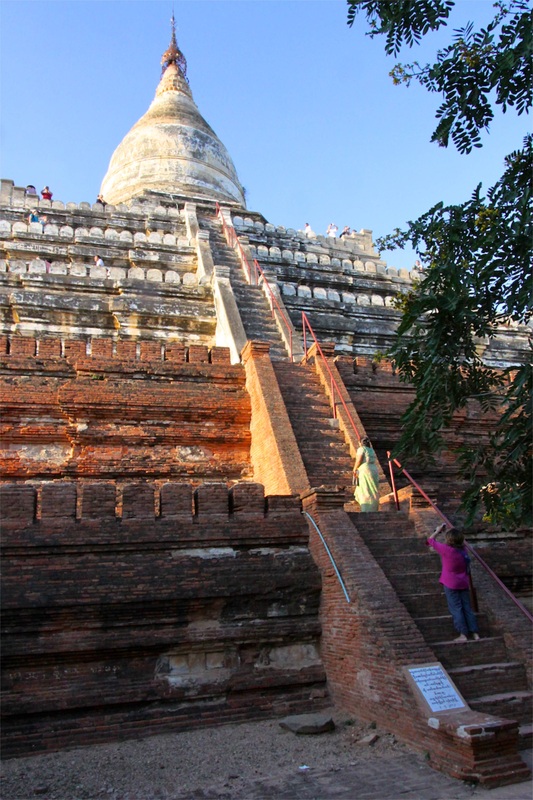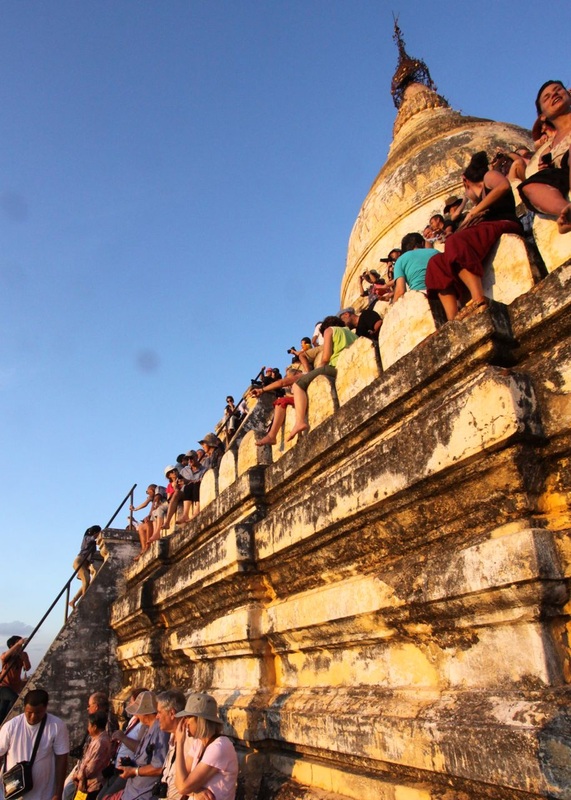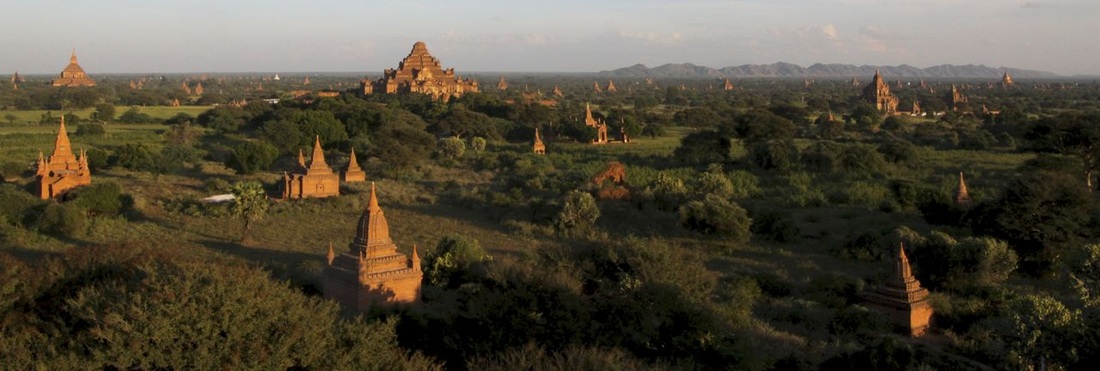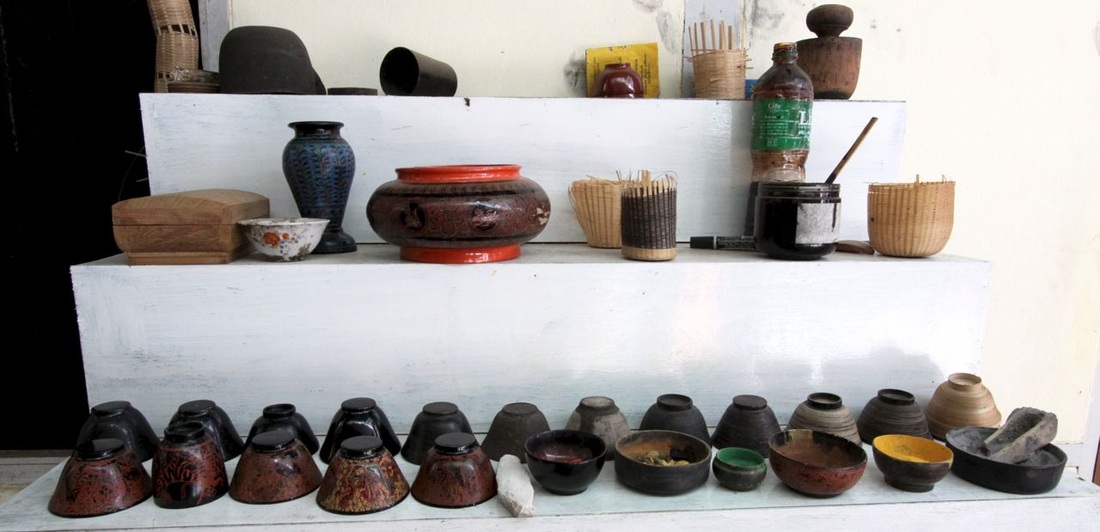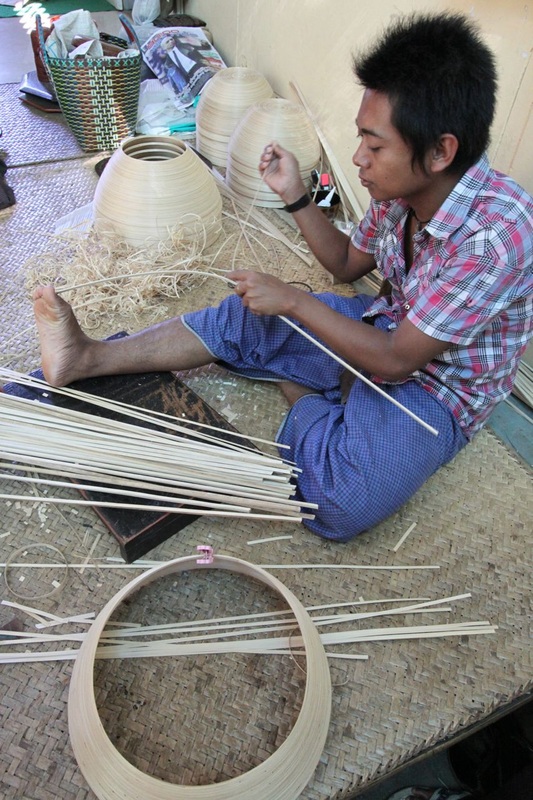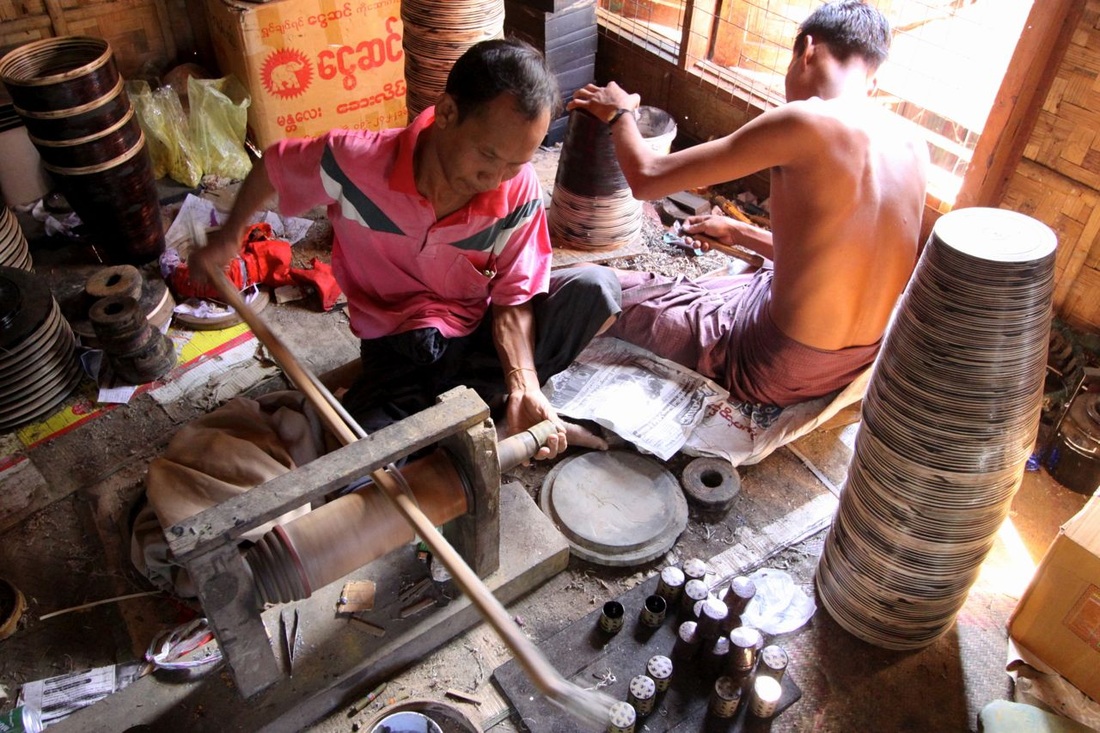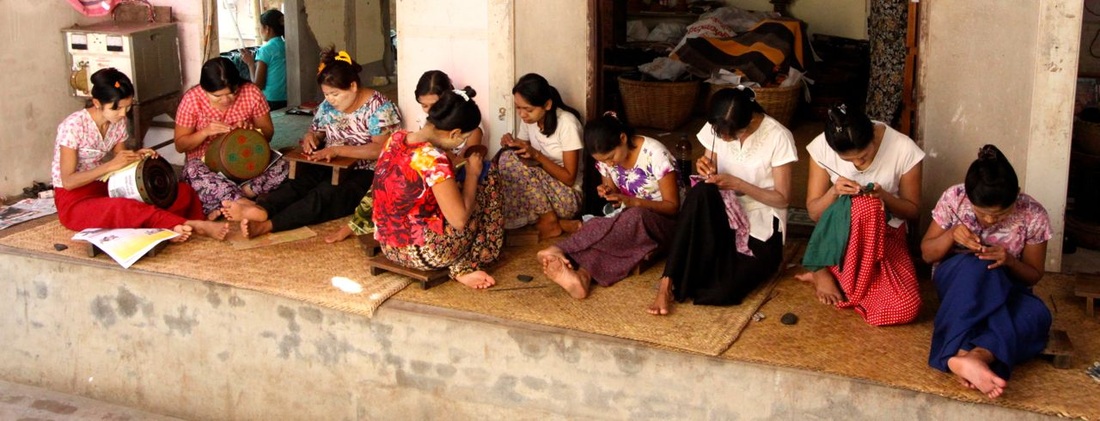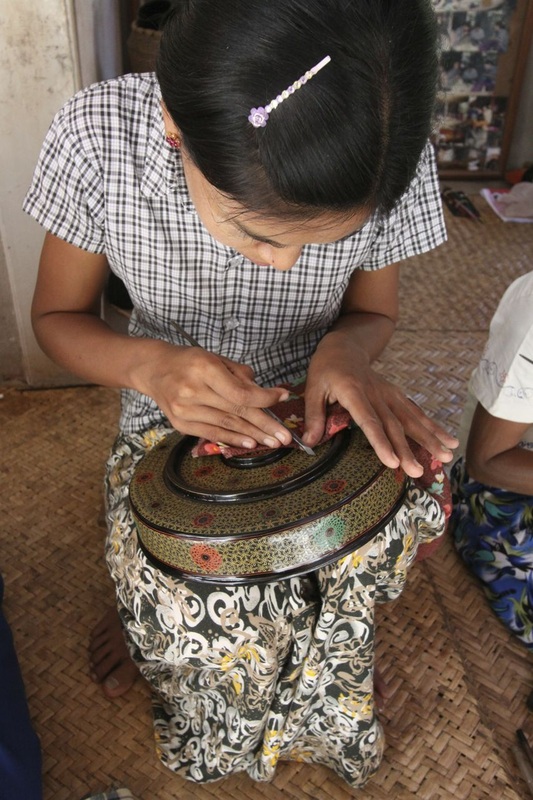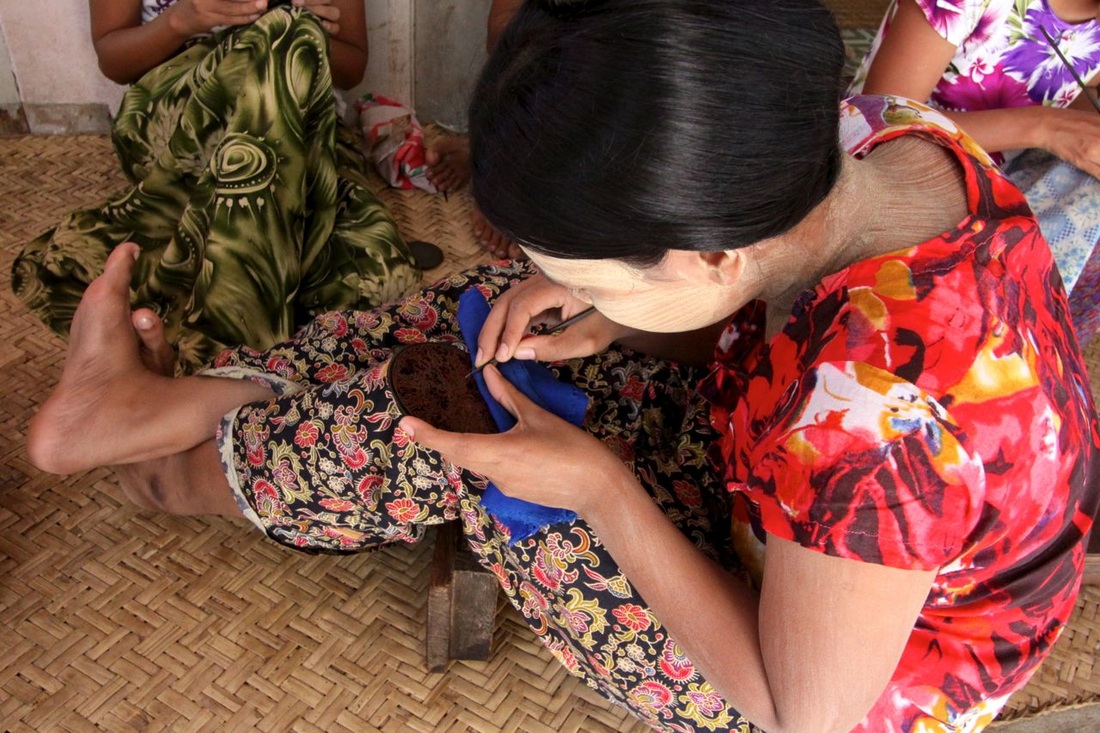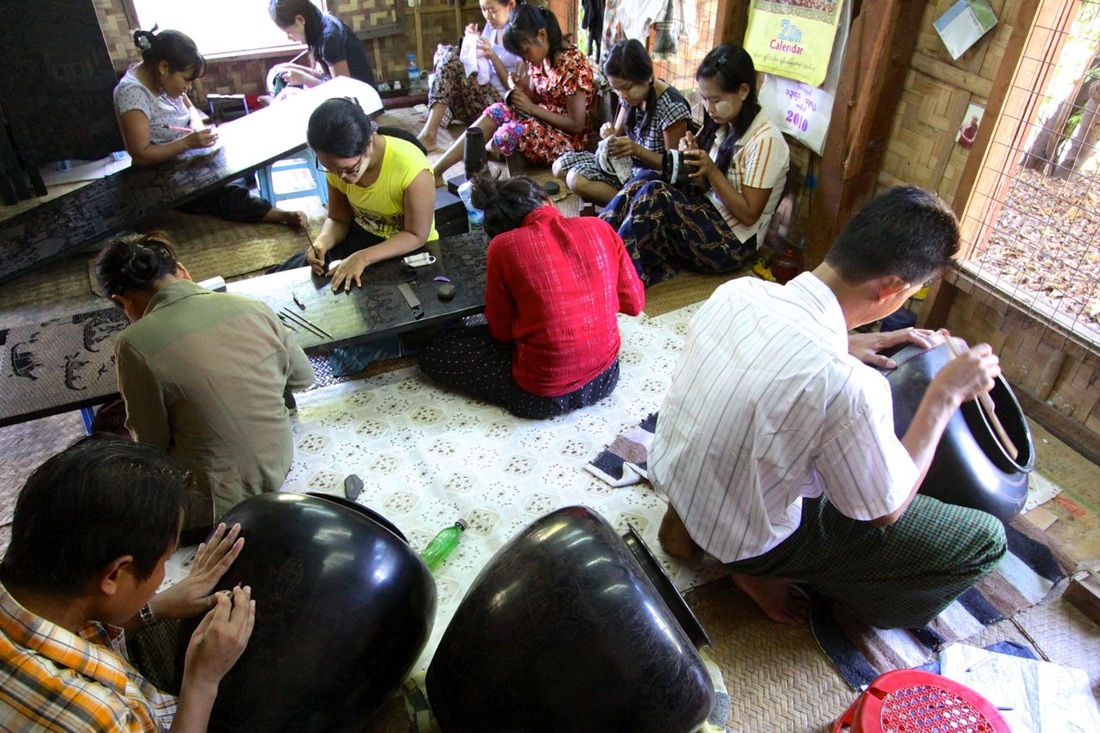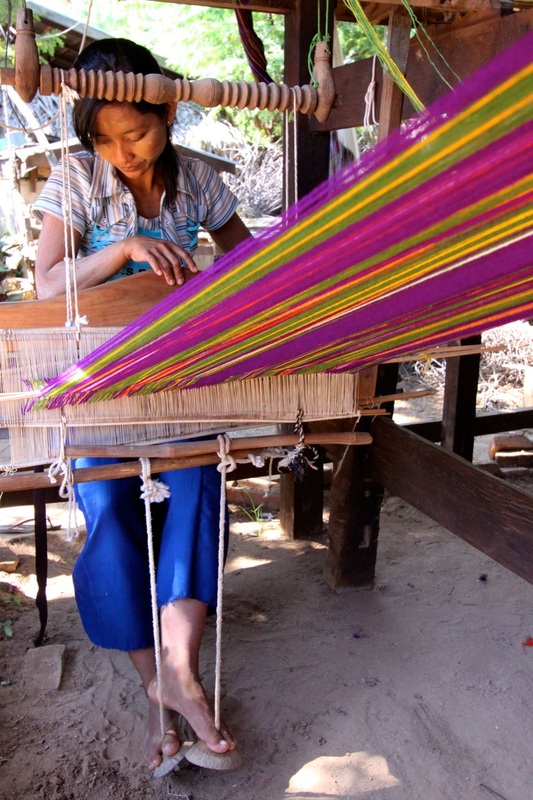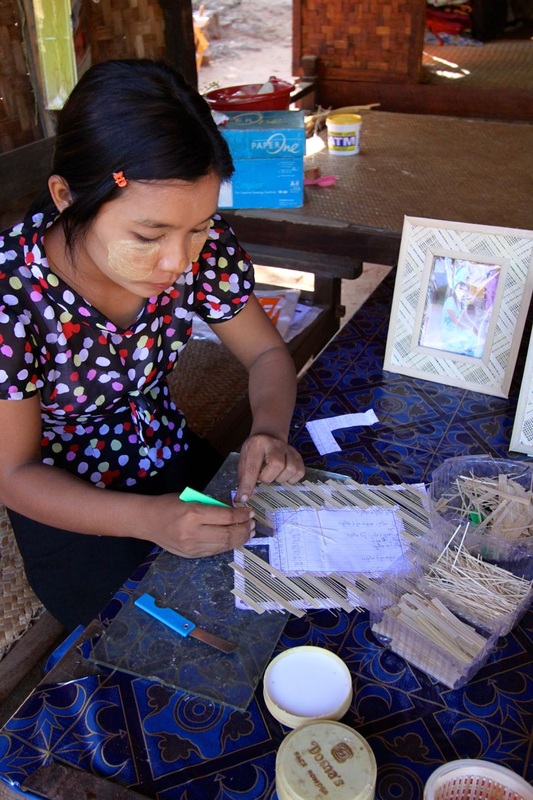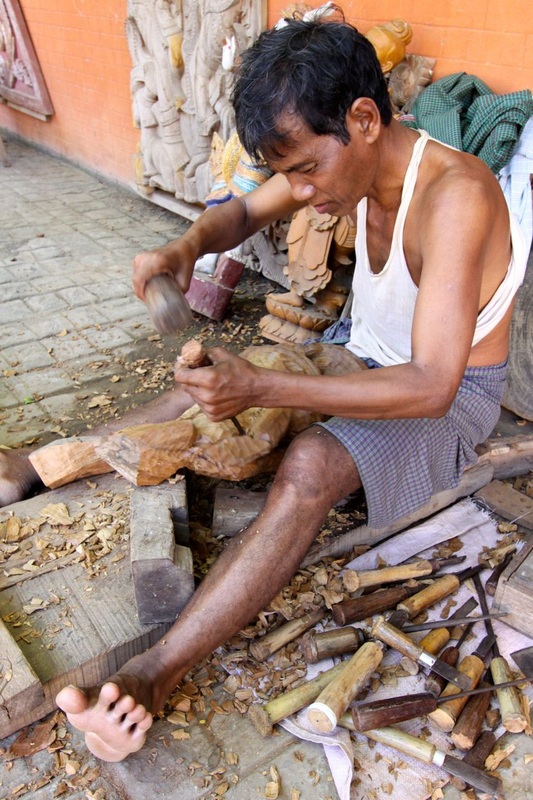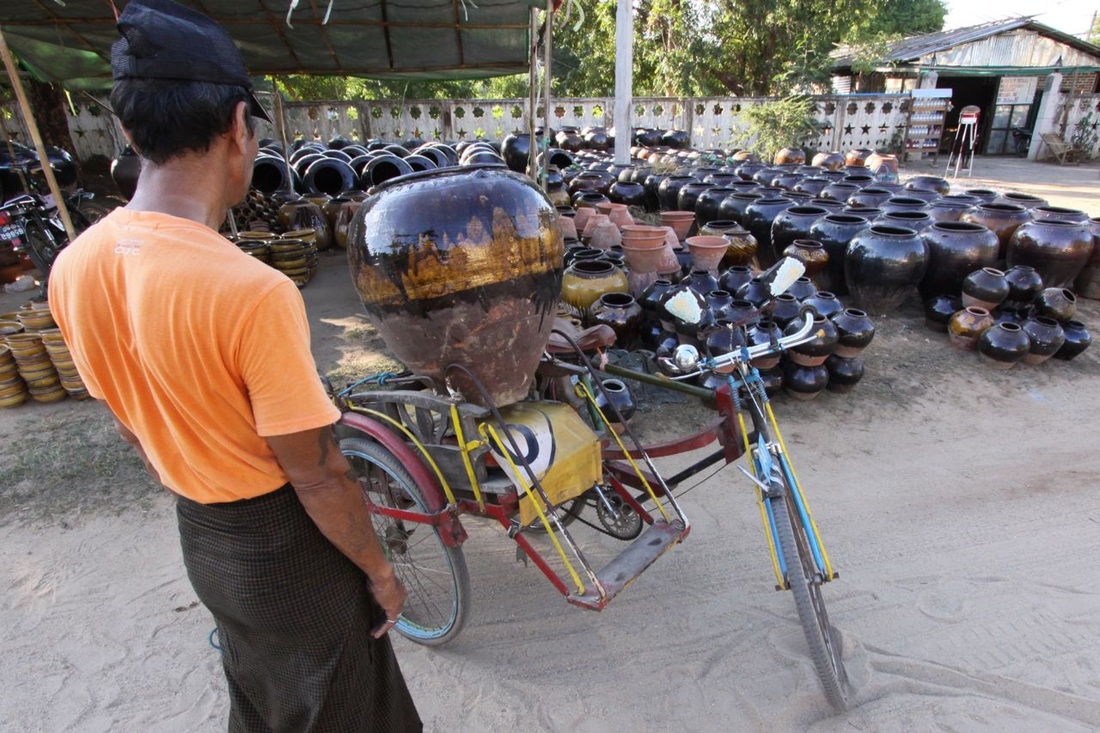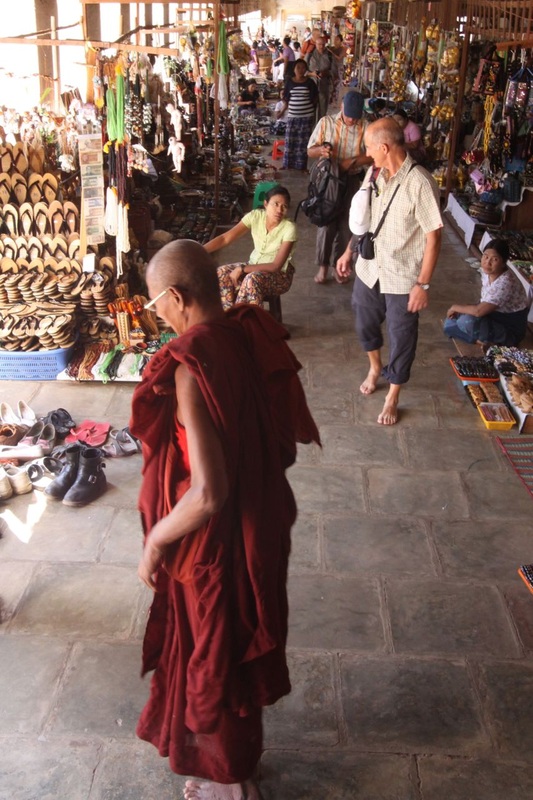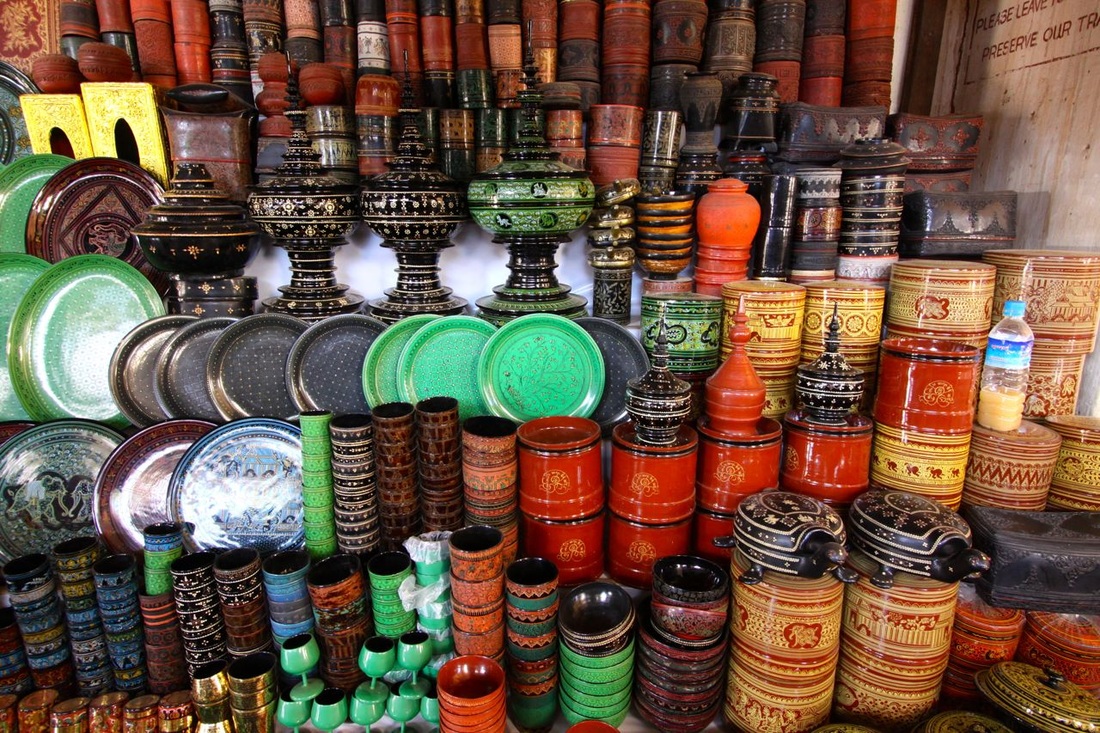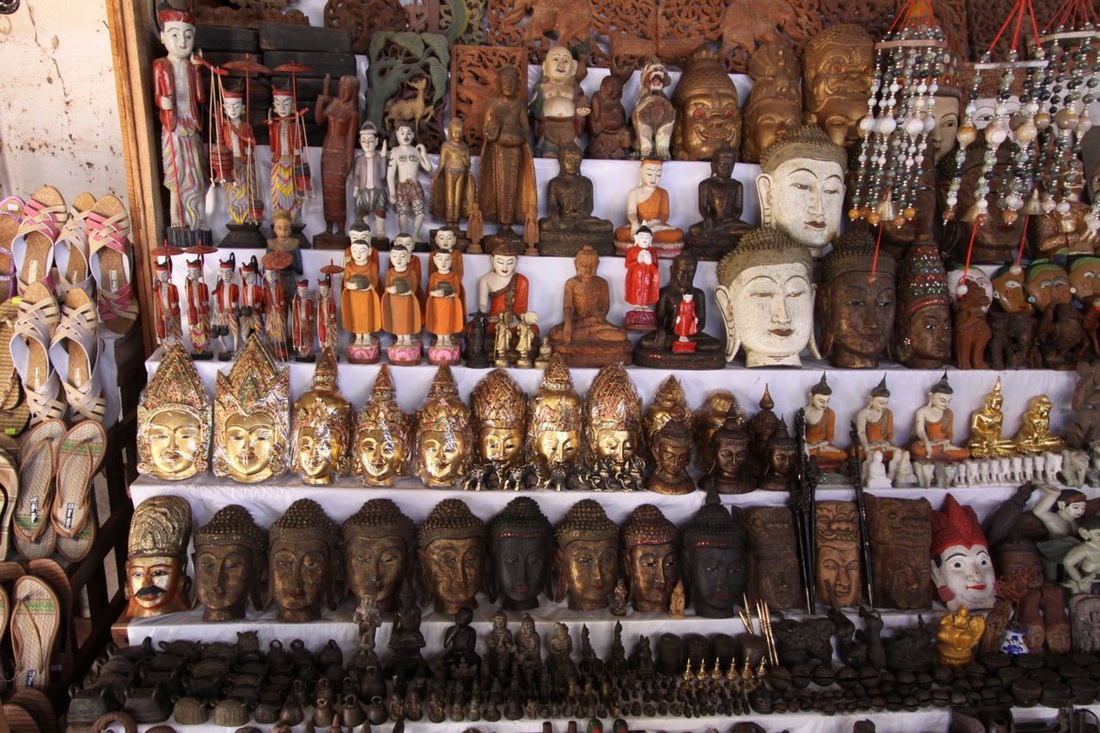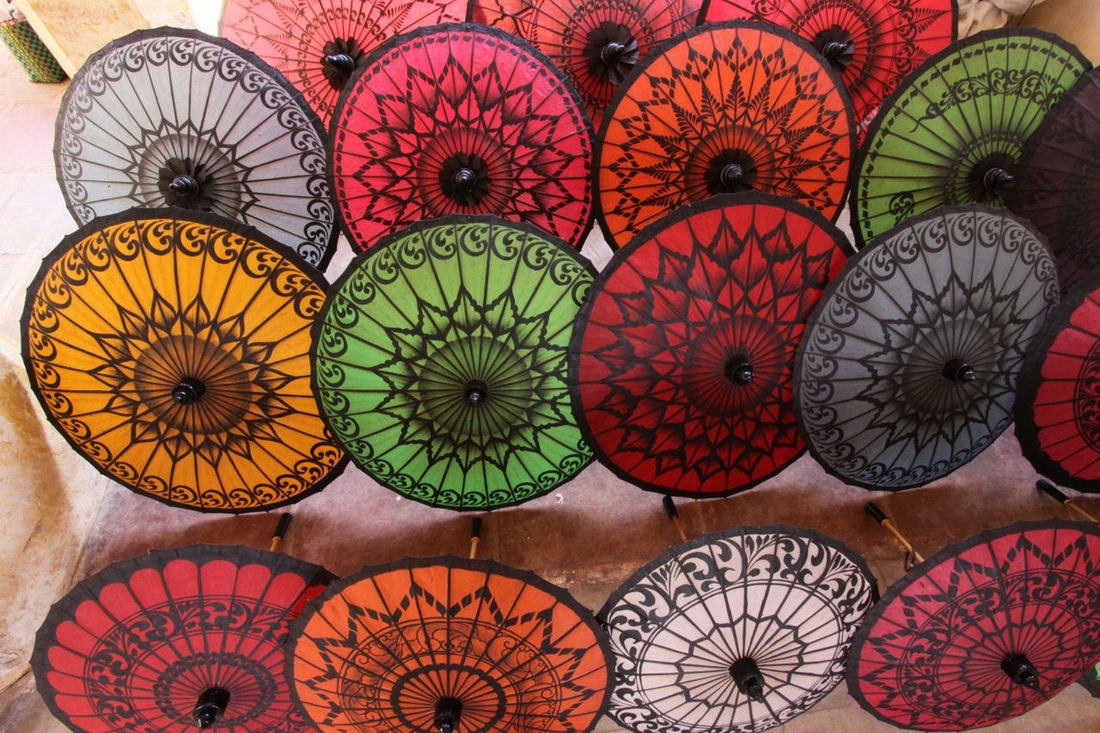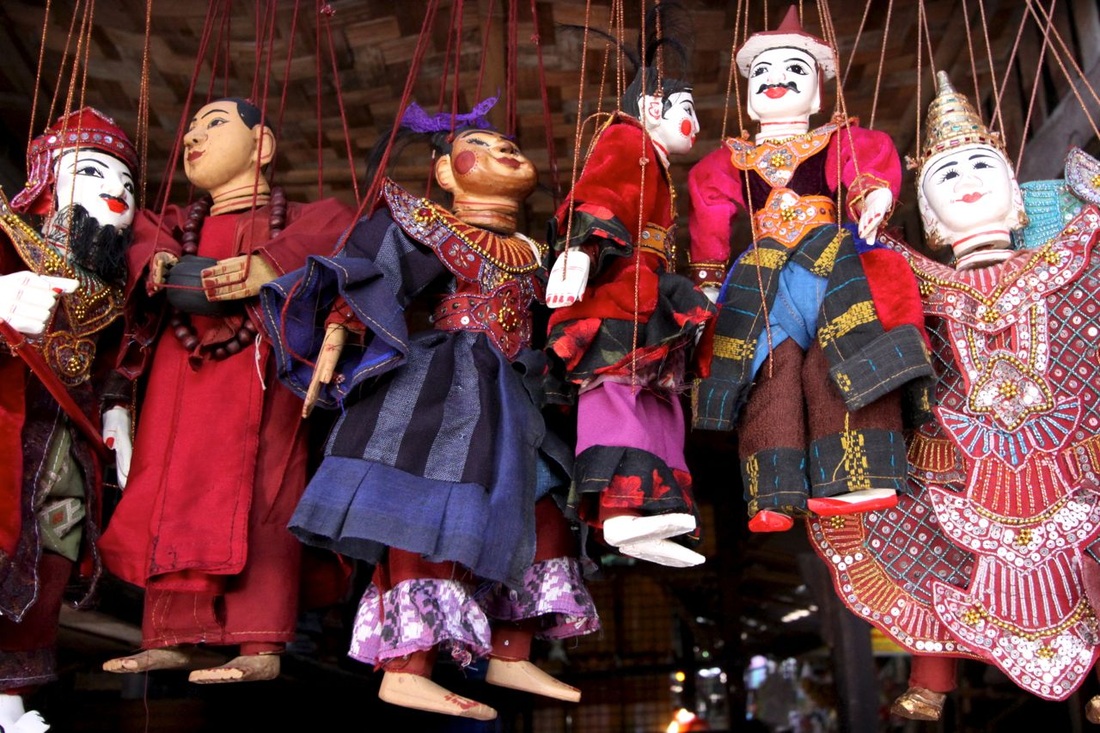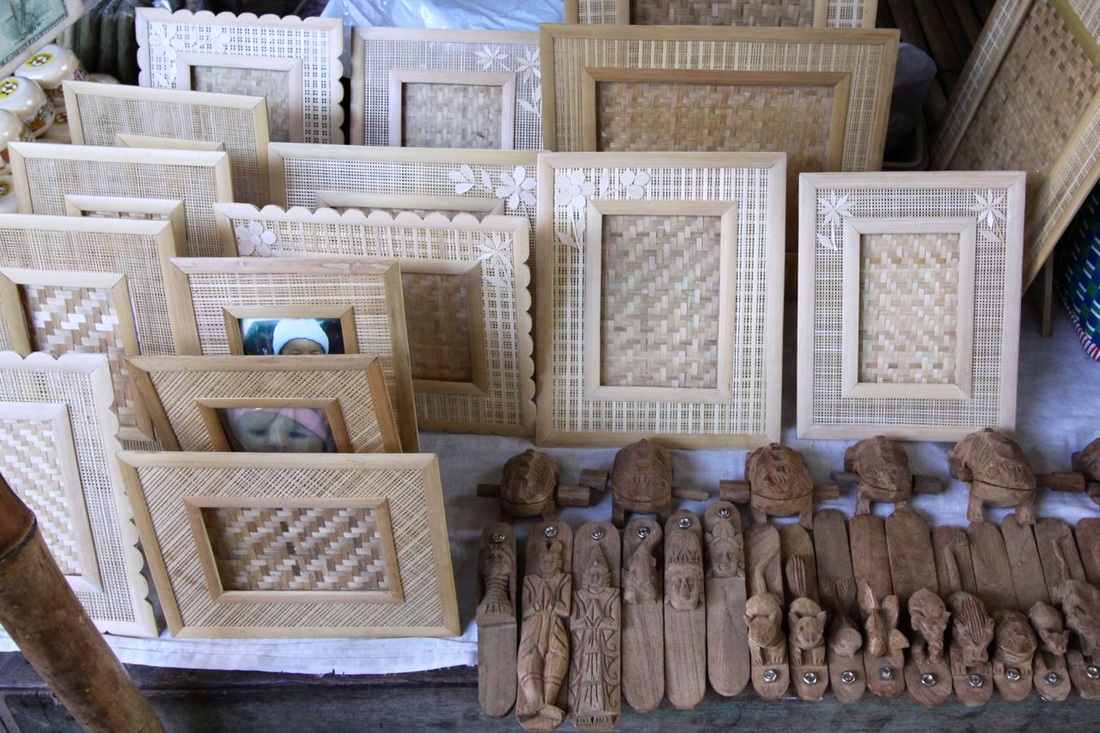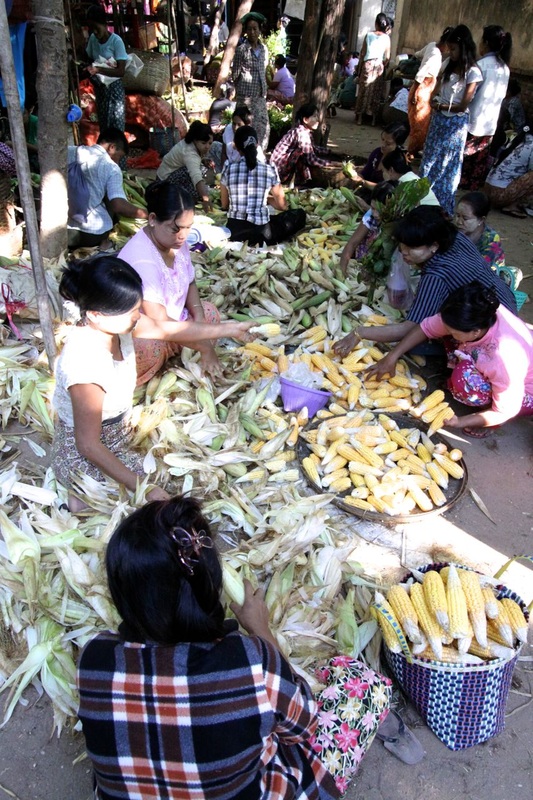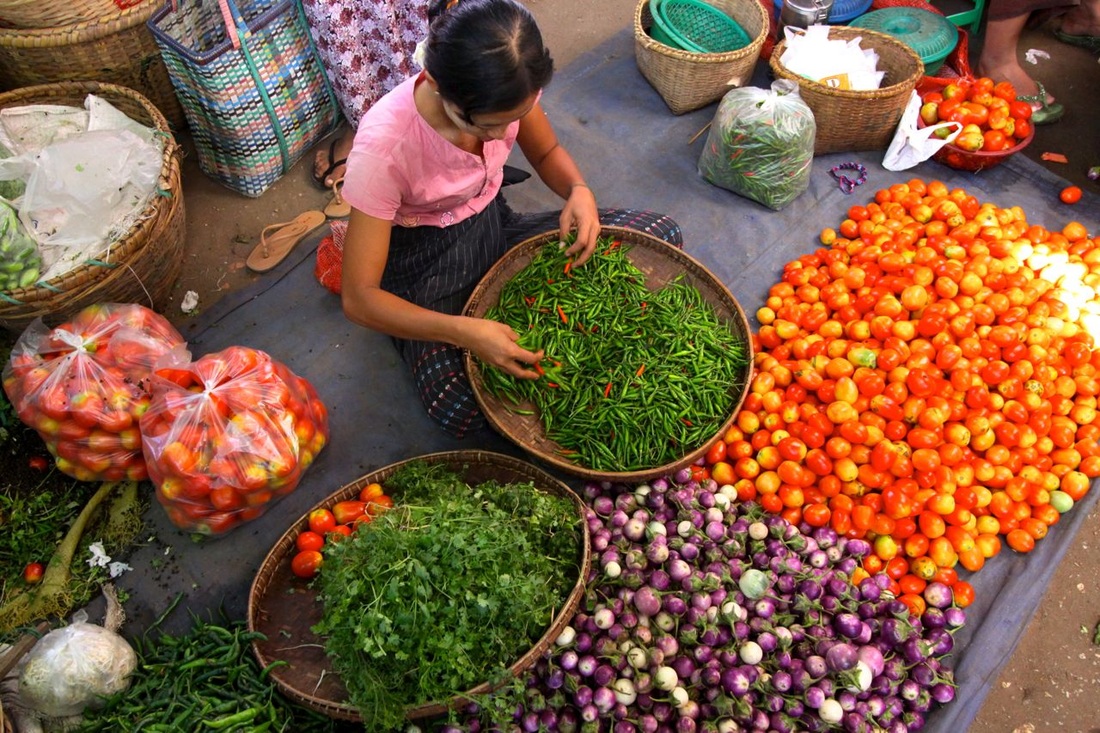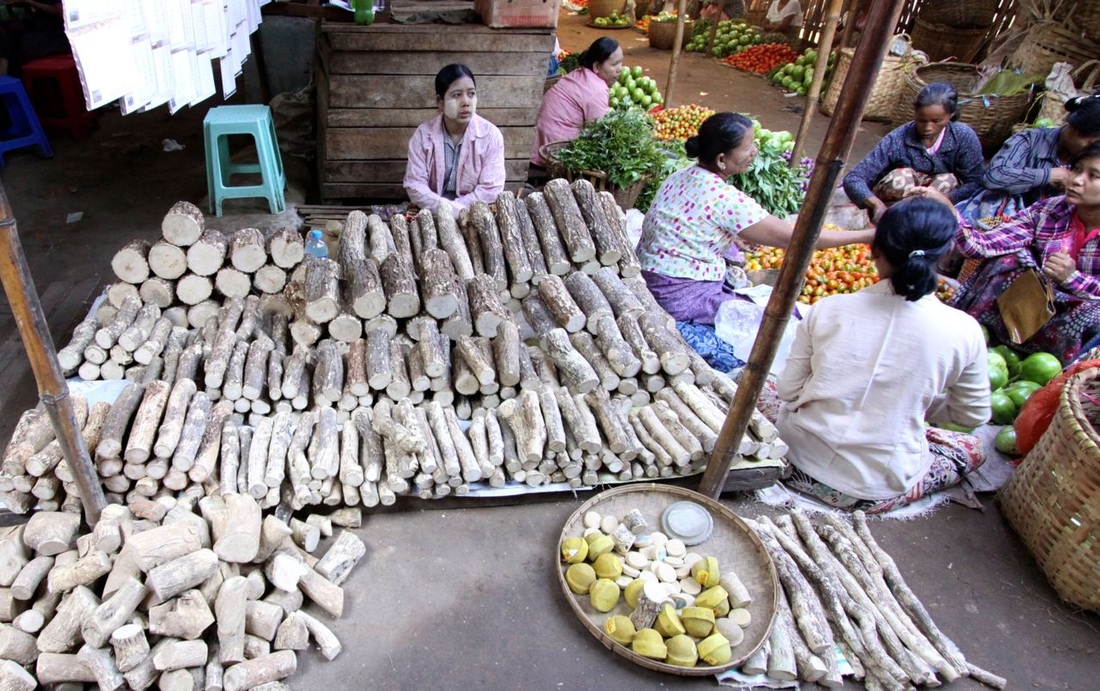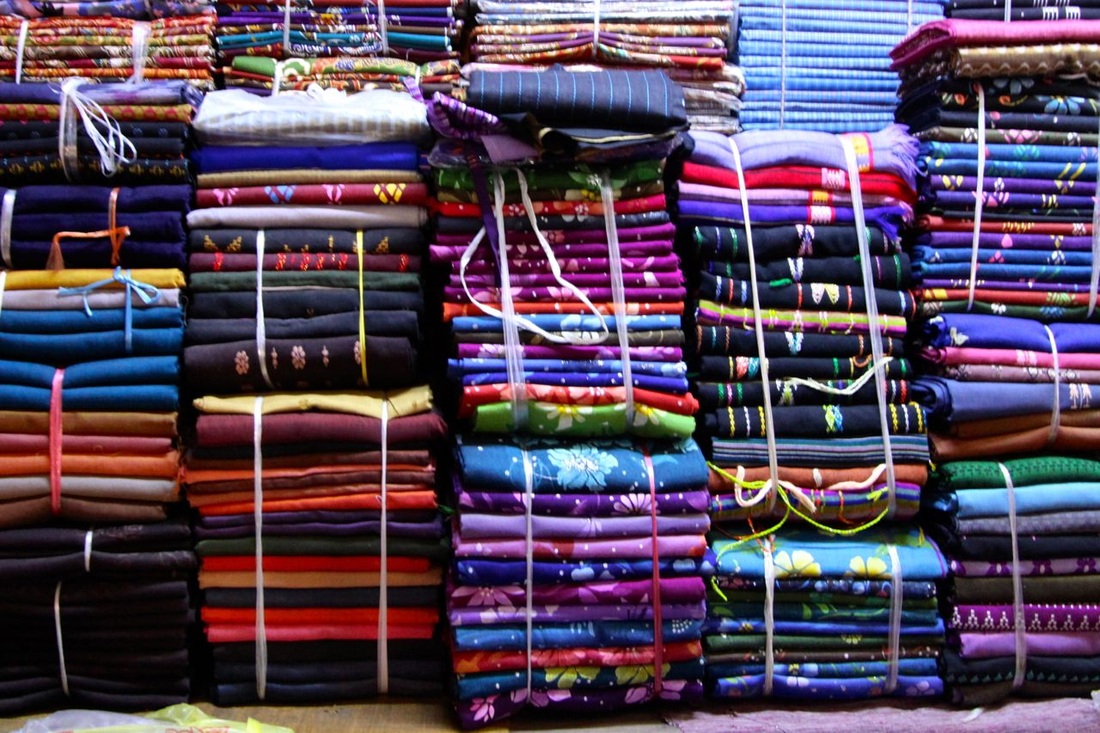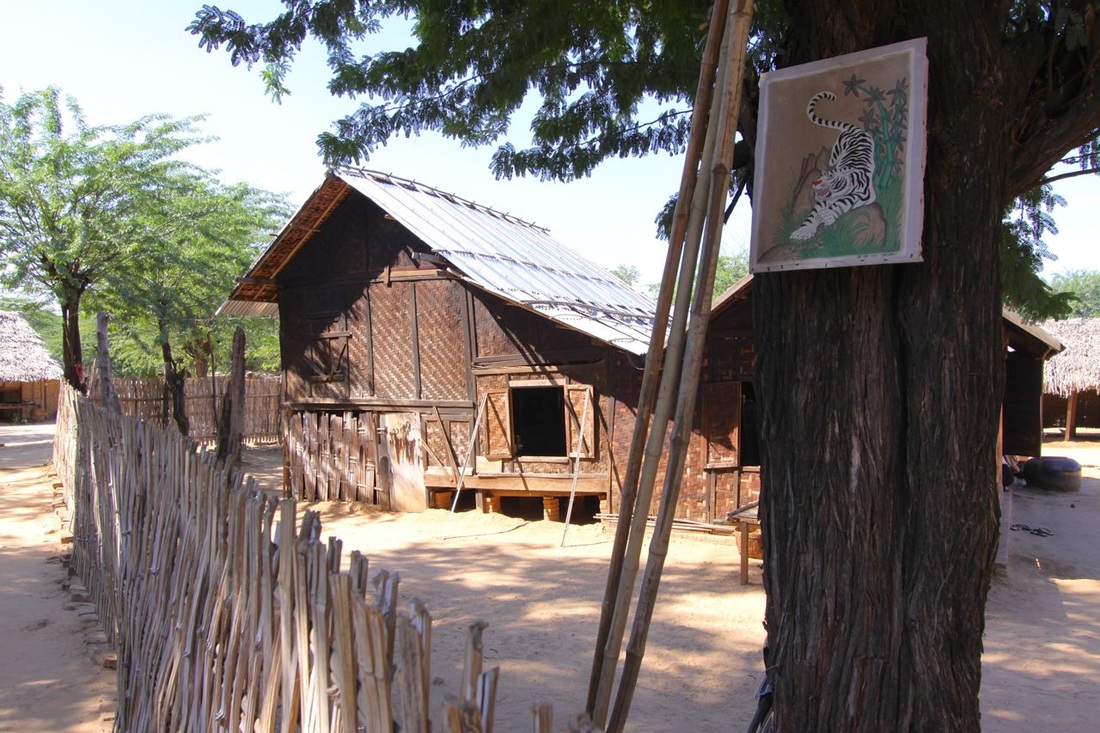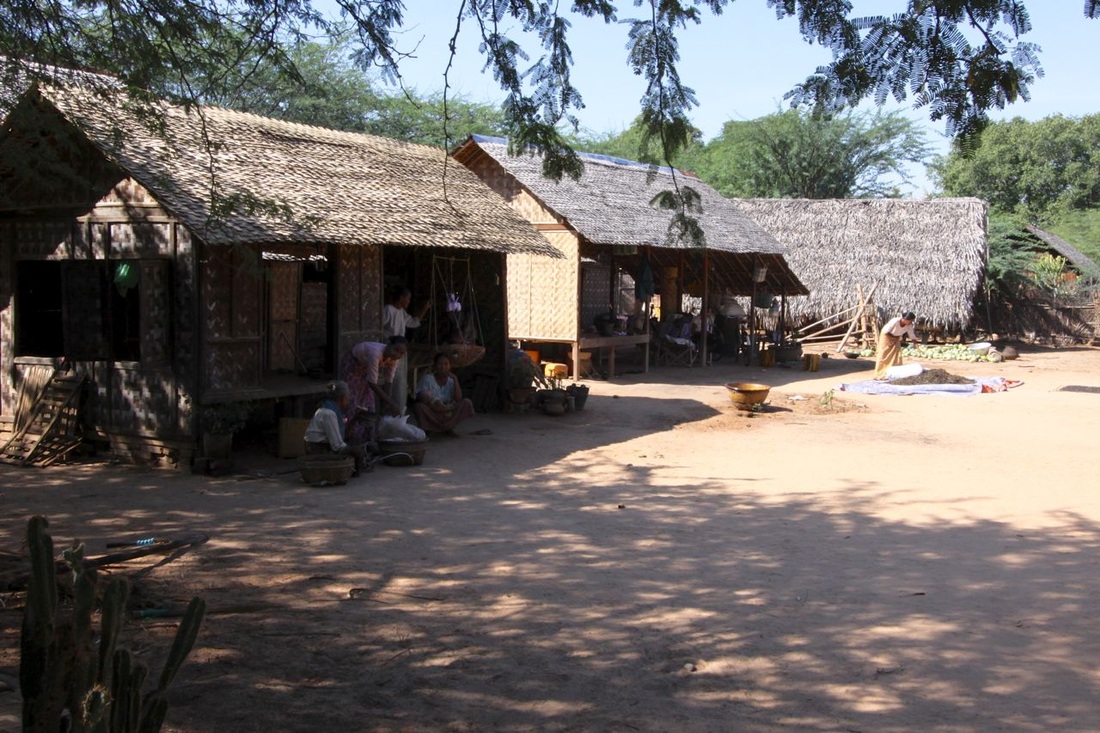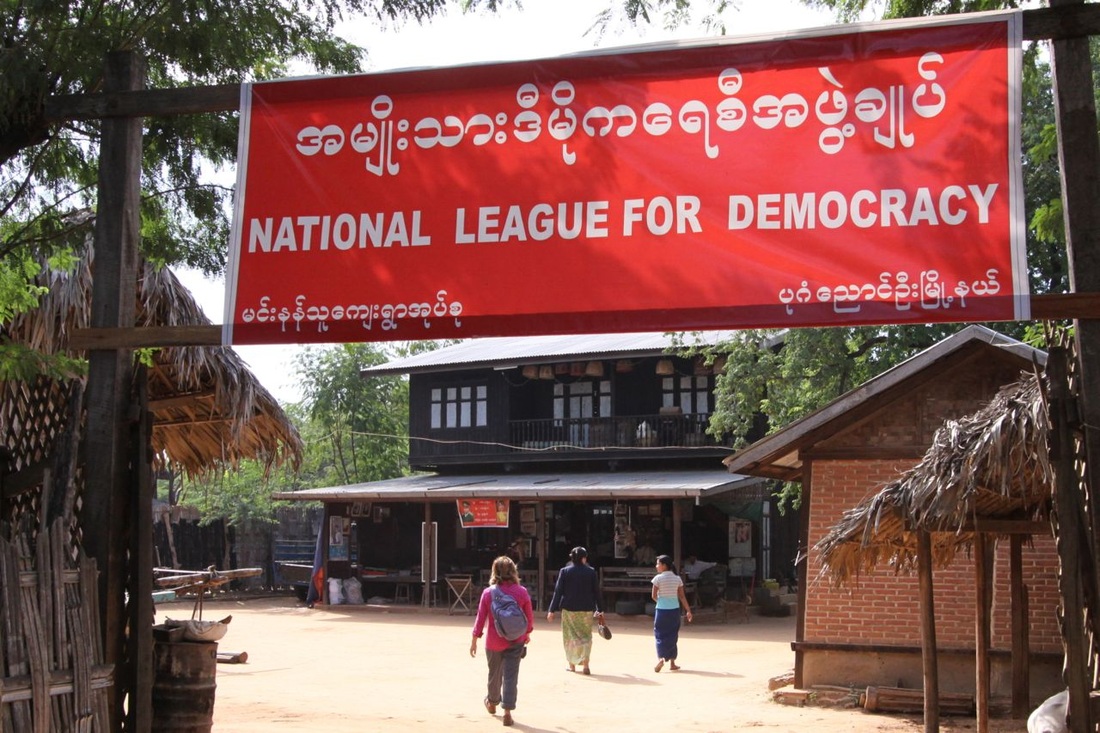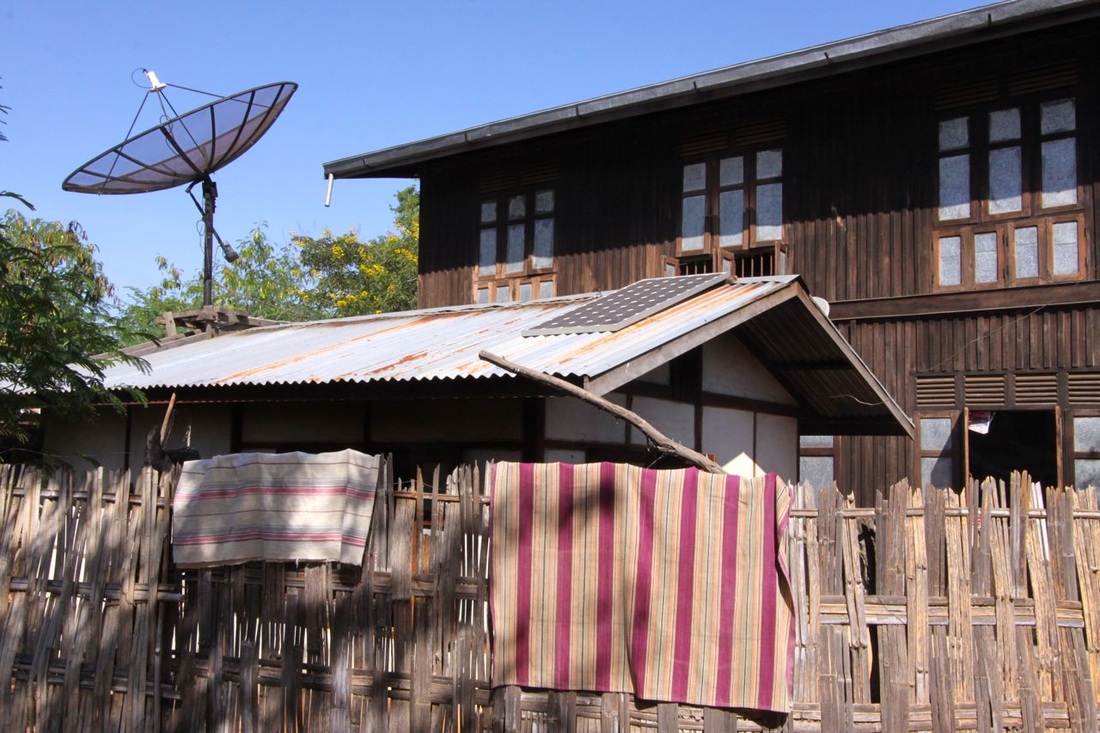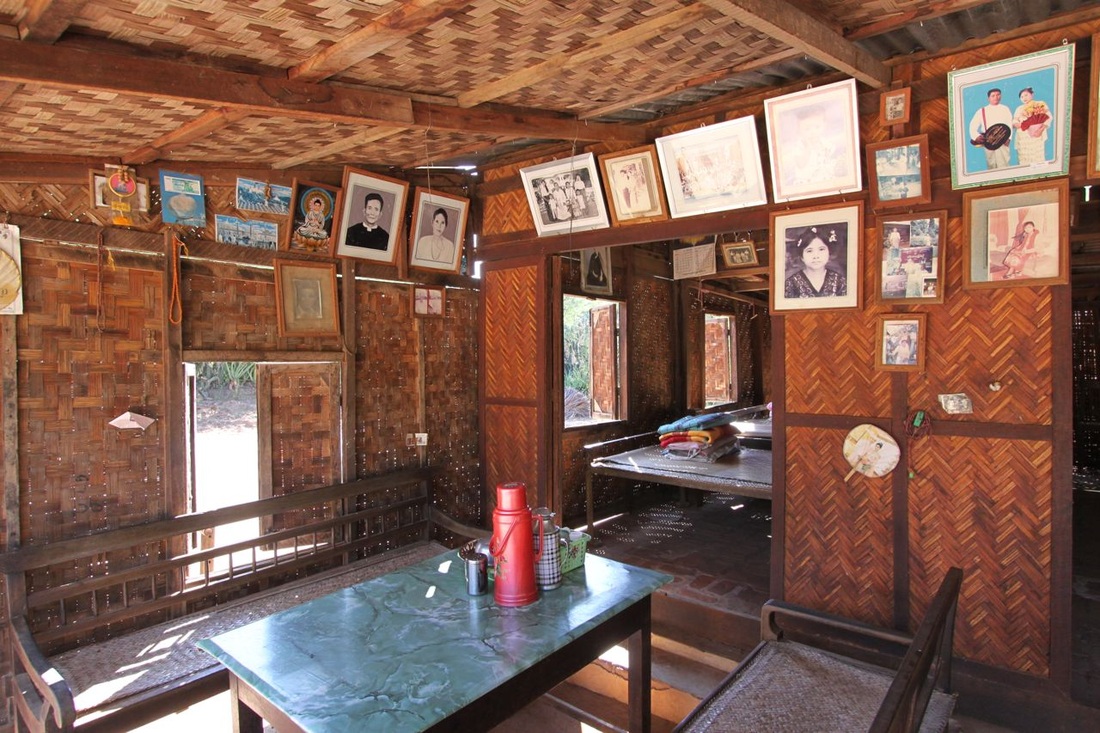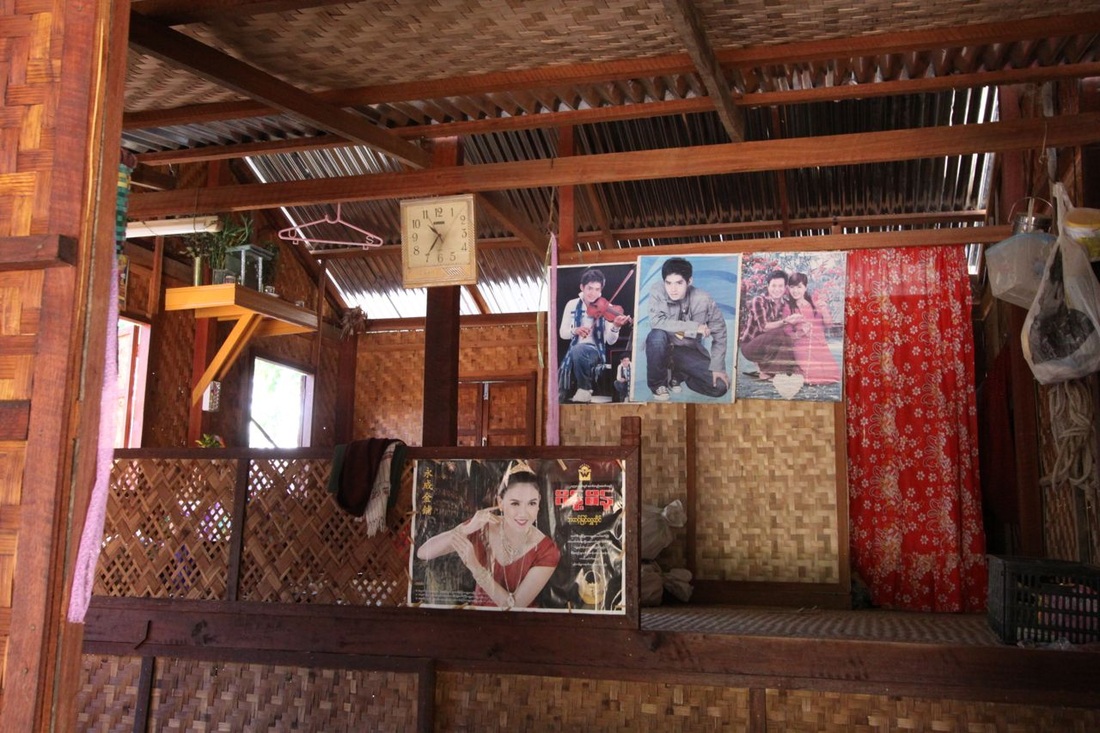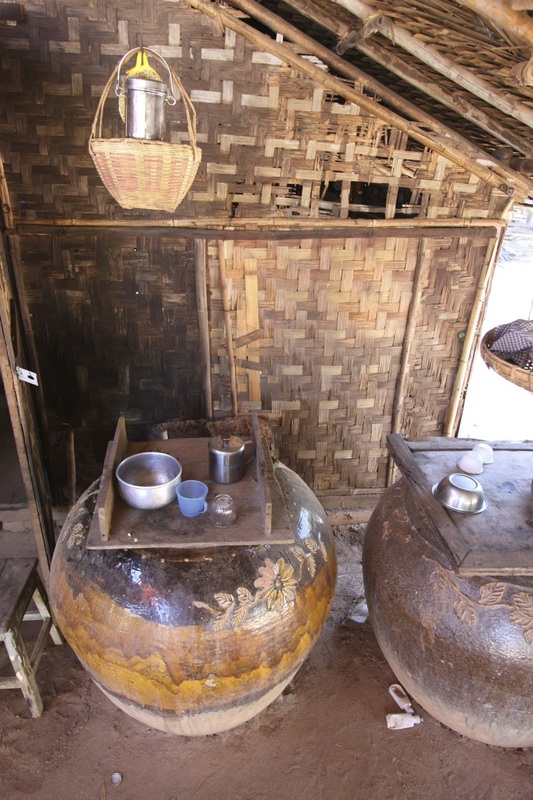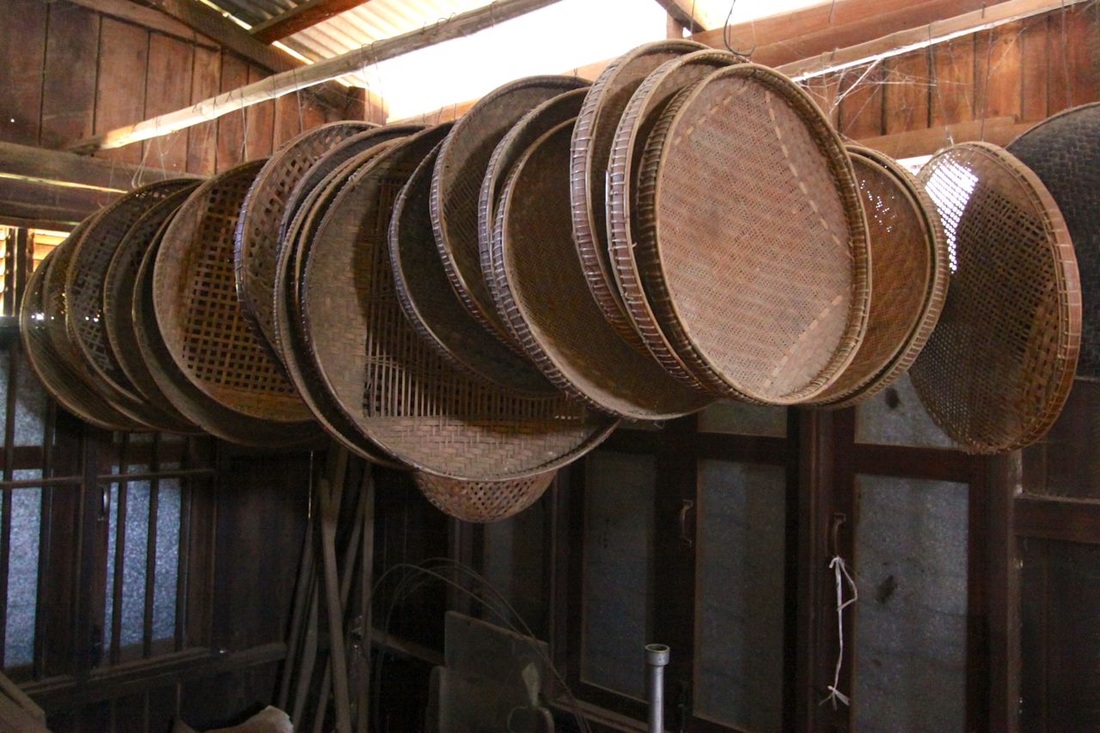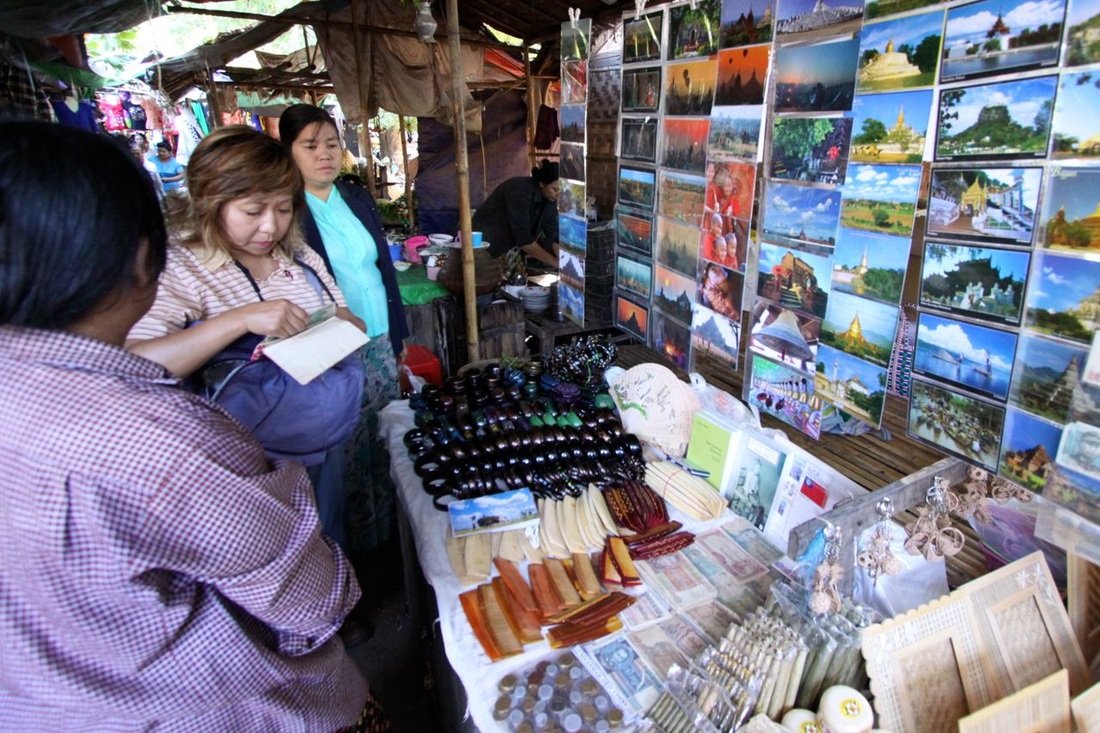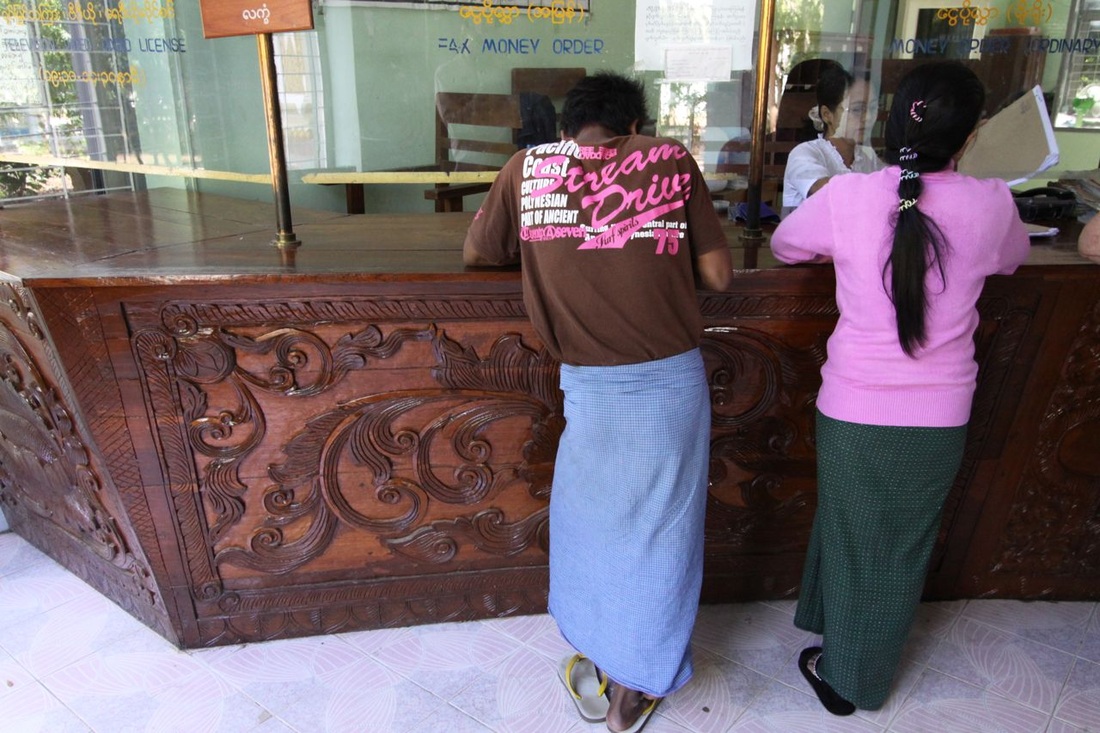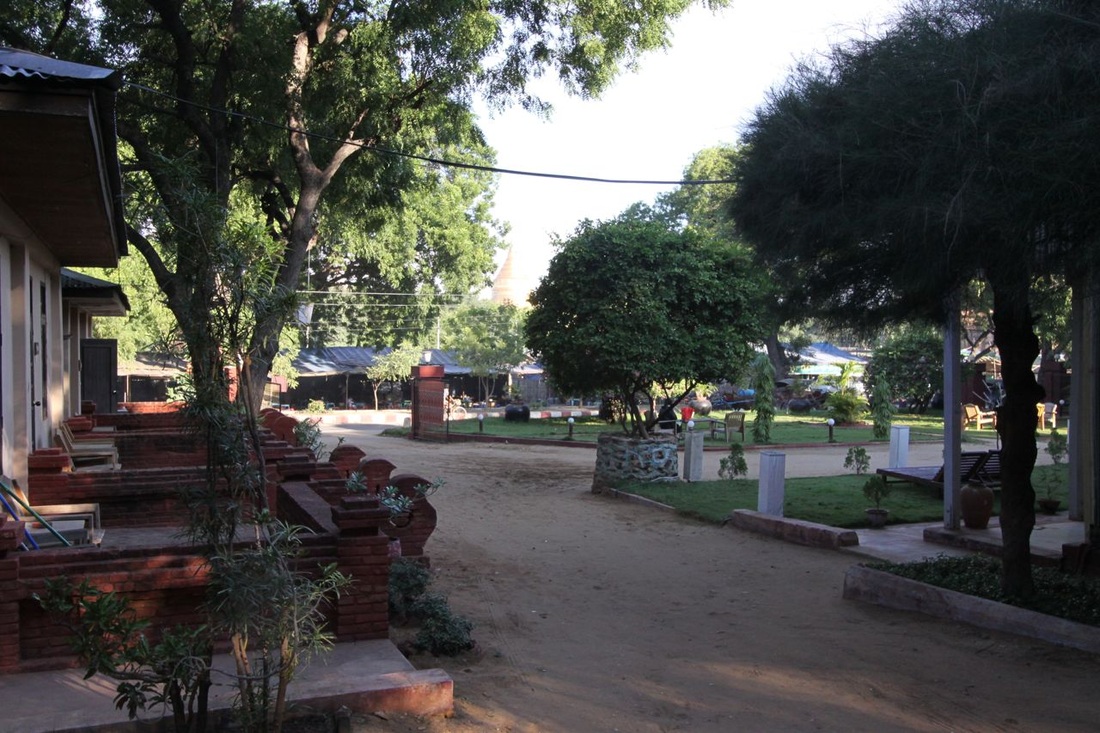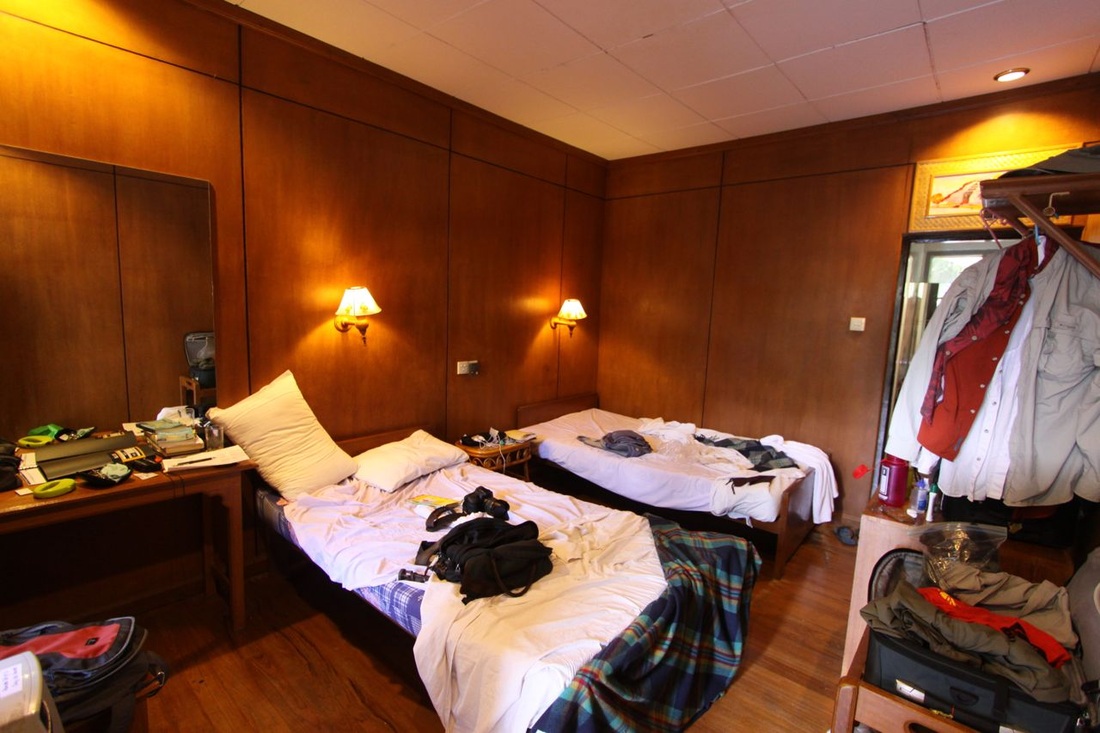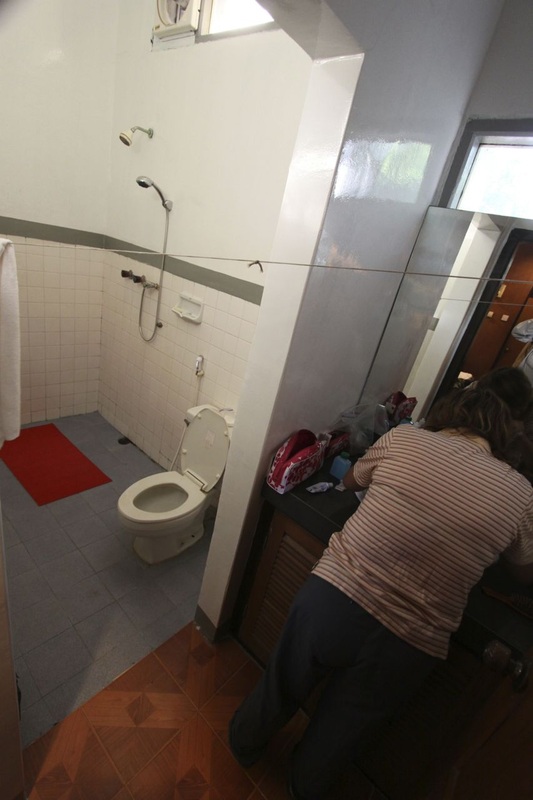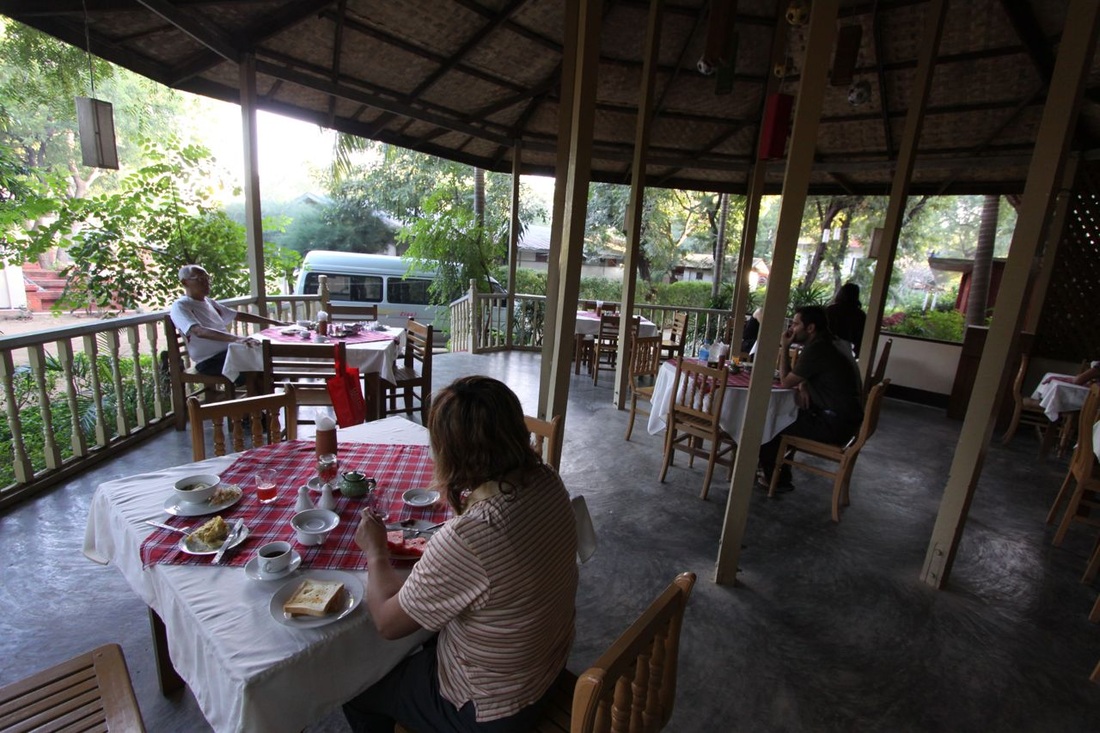BAGAN! The center of power from the mid-11th to mid-13th centuries, has a legacy of Buddhist architectural monuments...
...and thriving crafts, notably lacquerware.
Knowing there are over 3000 monuments, large and small, in good repair and crumbling, a short list of ten was made, based on a brief outline of the history of Bagan's architectural heritage.
First off, BUPAYA, 3rd Century, the oldest. A bell shaped stupa, the original survived until an earthquake in 1975. Apparently its replacement is in need of some repairs, since it is totally scaffolded and wrapped.
First off, BUPAYA, 3rd Century, the oldest. A bell shaped stupa, the original survived until an earthquake in 1975. Apparently its replacement is in need of some repairs, since it is totally scaffolded and wrapped.
Even so the shape is apparent as is its direct connection to early Buddhist stupas in India. Nice Ayeyarwady River-side site!
LAWKANANDAR, 1050's, is the next development: a bell-shaped stupa on stepped terraces. Alas it is undergoing repairs as well!
But there are always lots to do in the temples: ring the bell and send sounds of good merit skyward.
Also a riverside temple, it has a shrine to a protector of boatmen; splash water on him for safe journeys. Note how his shrine "floats" on a raft of metal (for durability) logs.
PATIKA TAIK, also mid-11th century, is a rare example of a library. Small, and quite dark, the temple it was a part of has long disappeared.
Solid stair railings often depict a dragon or other serpent like creature. It is not readily apparent in this early form.
The library was for lending, not for sitting in and reading: openings are for ventilation not illumination. This grill is a recognizable eight-pedal lotus.
SHWEZIGON, 1060, is one of the most compelling of Bagan's sights. It rivals Yangon's Shwedegon (more of it later). It has an entry for each cardinal direction, all but North have an imposing pair of entry "lions". This, the east entry, is much less used than others.
The North entry has instead two human figures, and a few food and souvenir vendors.
Modest entries for such a resplendent monument. The simple bell-shaped Bupaya has been enlarged, and placed on three receding terraces. It is traditional, on visiting a temple, to circumambulate the stupa in a clockwise direction. Along the walls are small square tiles with figurines which tell tales of the Buddha and Buddhism.
Lots of tales to tell, so terrace upon terrace provide space for more and more tiles.
The terraces are accessed by stairways whose railings' dragon motifs are more readily recognizable.
Day or night, people come to circle the stupa and pray before images of Buddha, or simply before the stupa.
Not unusual to see groups of young monks...
...visiting and learning those Buddhist tales. Such as the one of the Prince Siddhartha...
...statue on right, who escapes from his palatial confinement on his horse, whose jump over the wall is assisted by angels. He then sees for the first time, an old man, a sick man, a dead man and a monk.Thus starts his search for final understanding and enlightenment and transformation to a Buddha.
The stupa, and terraces below are solid. But there are four buildings, each with an impressive gold covered Buddhist statue, on the cardinal points.
As in other Buddhist countries, candles and incense are offered, but not to the extent one sees in China or Japan.
And there are legends: it is said Royalty did not wish to risk losing their headgear by looking up to see the top of the stupa, so pools of water were made, which they could glance down at and see the stupa's reflection.
It works!
ANANDA PAYA, 1086, ah the creeping LED signage of the world
Ae first seems to be another solid stupa on raised terraces, but there are four entries with corridors to the interior. A major design premise was the symbolic creation of the Himalayan mountains, white with many peaks rising to a the summit of Mt. Meru, bathed in golden sun light.
A serpent like figure along the edge of a roof.
And a stalwart protector next to an entry.
One is asked not to wear foot-ware or socks in the temple compound; keeping it relatively free of stones, leaves, other matter is a on going task for the caretakers.
Further into the interior, the door guardians are more attractive than the exterior ones...
The statues are about 39' above the dias. Note the daylighting around the face (as well as electric lighting and shadows). The interior is pierced by high openings bringing daylight into the statue niche, ...
...as well as by two transverse corridors, with openings, which bring daylight deep into the temple.
SULAMANI, 1183 is one of the largest structures in Bagan. It is a two-story temple, with niches on the ground level, as well as on the top terrace level. Access to the upper story is no longer available.
It has one transverse corridor in the interior, which provides much wall space for murals. Devotees, and possibly donors, are painted giving floral offerings to images of the Buddha at rest.
On the exterior there remain many stucco carvings, such as demon protectors.
UPALI THEIN, 11th or 12th century, is a small ordination hall.
Its roof rake serpent seems to be in the act of consuming, or disgorging a small animal.
MAHABODHI, 1216, in plan and exterior surface decoration, is based on the Indian temple of the same name.
The exterior walls and the stupa are totally covered with Buddha's in the "touching the earth" pose. Appropriate, since the Indian model is built at the site where Gautama achieved Enlightenment.
The entry is unusual: a series of step-backs, with only one icon in each plane, lead to the door of a ...
relatively small shrine, compared to the temple (and statue) size.
SEINNYET NYIMA, 13th century, is an unusual compound: a temple was built for a Queen and next to it, a pagoda for her sister.
The temple has four entrances, the east one has an elongated vestibule with two windows. The sister's pagoda is solid with no entries.
One of the vestibule's windows.
The west entry and its Buddha, as well as a woman selling paintings, and her assistant.
The east entry Buddha, and our guide, Minmin.
The east entry vestibule has some remaining paintings.
The pagoda's west elevation seen from the temple's east vestibule.
Detail of the stupa on top of the pagoda.
MINGALAZEDI, 1268, is the last great monument built in Bagan. It was finished in 1274, but an invasion of Burma by Kublai Khan, which started in 1277, lead to the abandonment of Bagan in 1284.
It still has many of its story-telling tiles.
SHWESANDAW PAYA, 1057, is contemporary with Shwezigon, and similar: a stupa on receding terraces. But it never was gilded, nor built out with surrounding shrines and ancillary buildings. It was included in our truncated list since it is one monument which can still be climbed.
Zhufeng photos Minmin as they start the ascent to the fifth terrace.
And the reason people climb it is for sunset.
Even if sunset is a bust (and it was) the lowering sunlight on the plain of pagodas behind makes the climb worthwhile.
On to other things of Bagan, starting with lacquerware.
On to other things of Bagan, starting with lacquerware.
A table of props used in explaining how lacquerware is produced. The rear cups on the bottom shelf show the nine steps (from right to left) taken to produce the basic black item. The cups in the foreground illustrate designs and colors added to the basic item.
Many items have bamboo strips as their core.
The pile of upside down containers, with black and white stripes, are bamboo strips after a first coat of black lacquer has been applied, dried and scraped down (man on the right). On the left, small containers are getting a final polish. A rope is attached to the stick and goes around the shaft, thus when the stick is pushed it turns the shaft. The man has a powder in his hand, which polishes the container as the shaft turns.
The incredibly detailed incising work is primarily woman's work:
Note the sharpening stone on the mat with which she keeps the metal stylus point sharp.
But the the large strokes, which set the overall design on the containers, is done by men. The younger women work on the simpler designs, while the more experienced (and more likely to be wearing glasses) women work on the larger, more complex designs.
In the rural areas, farm families are likely to also have craft work, such as this weaver.
Or this young girl making photo frames from bamboo strips of various widths.
This man is trying to free a Buddha image from a piece of wood.
And this man contemplates how to tie down a water jar to his rickshaw bicycle.
There are two types of market places in Bagan. One, such as this, which is connected to a temple. A sheltered walkway leading to the temple provides a place for vendors to set up and beckon to passing visitors.
Finished products from those lacqueware people.
Carved figurines (with sandals to the left).
We saw these being used as parasols; I wonder about as umbrellas.
Marionettes are a popular form of story-telling entertainment. Of wall hanging.
Finished bamboo photo frames, and carved wooden book marks.
The other markets are for everyday shopping. Bagan's main market has grown to have both very permanent buildings, as well as ground space covered by a riot of temporary tarps. Corn was in season.
The "thanaka" tree sections for face cream. Also available in pressed cakes. Note the sellers generous application on her cheeks.
Bolts of cloth for the national male and female "skirt", the "longyi".
The entrance to this village is protected from evil spirits by this painting of a tiger.
A collection of structures make up a family compound.
The local NLD chief proudly displays the party name and the Aung San photographs.
In back we saw they were connected to the world with dish and p.v. panel.
Inside however things were rather simple. Note the bed linens folded up for the day.
Pop star posters seem to be the decoration of choice.
Water from a well in the compound is brought and stored in large pots.
Looks like a farm needs lots of winnowing baskets....
And finally a few photos of other tourist activities:
And finally a few photos of other tourist activities:
Buying post cards.
Mailing postcards.
Hotel front yard.
Breakfast buffet.
